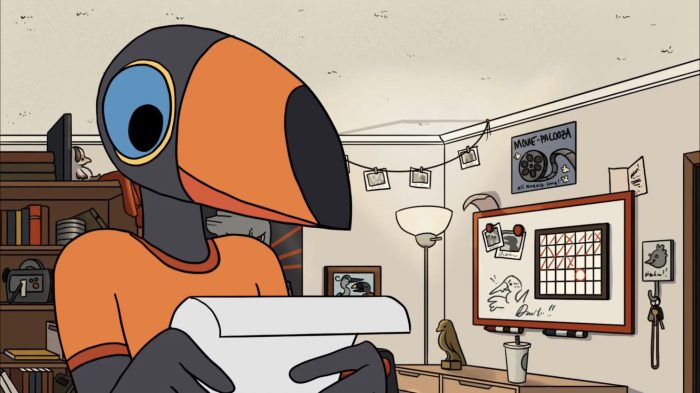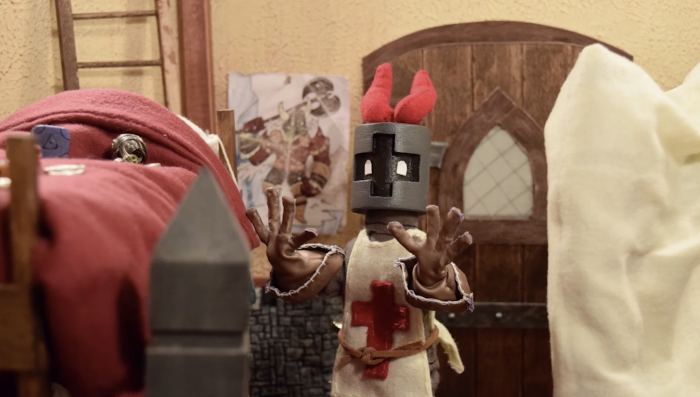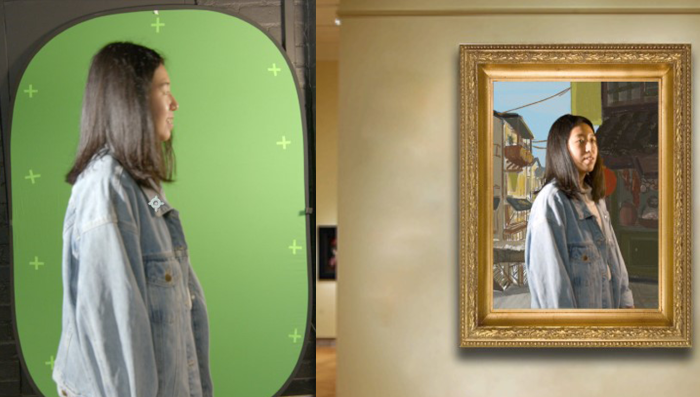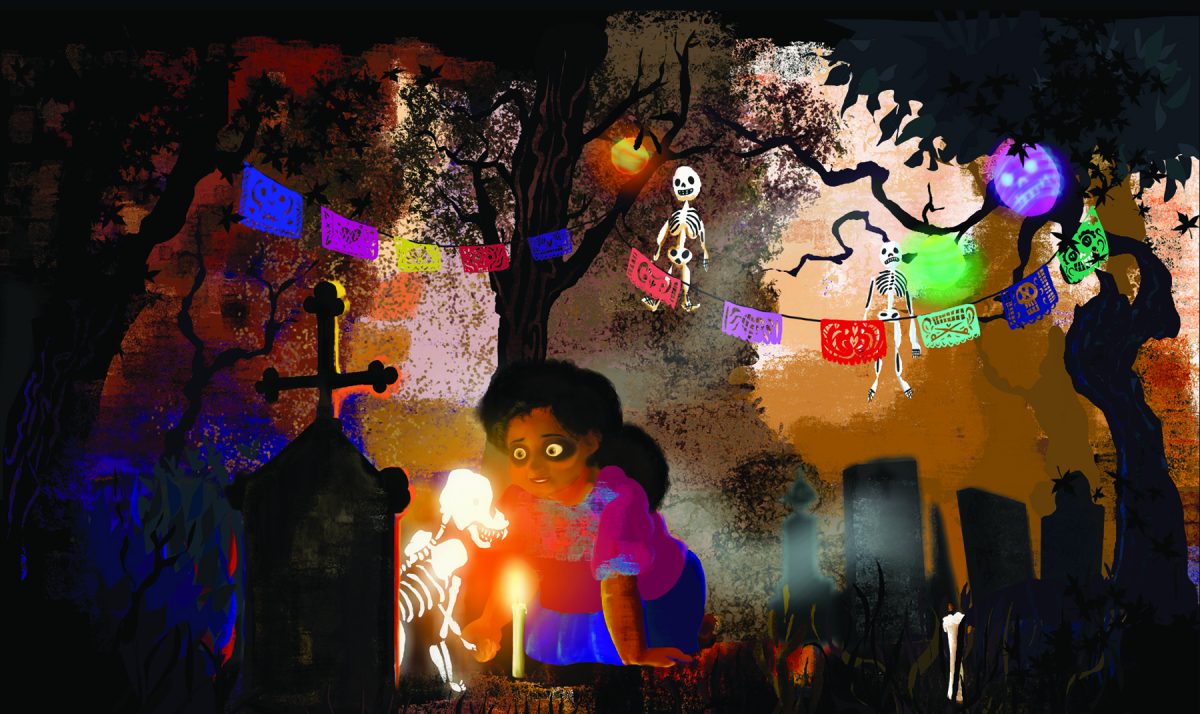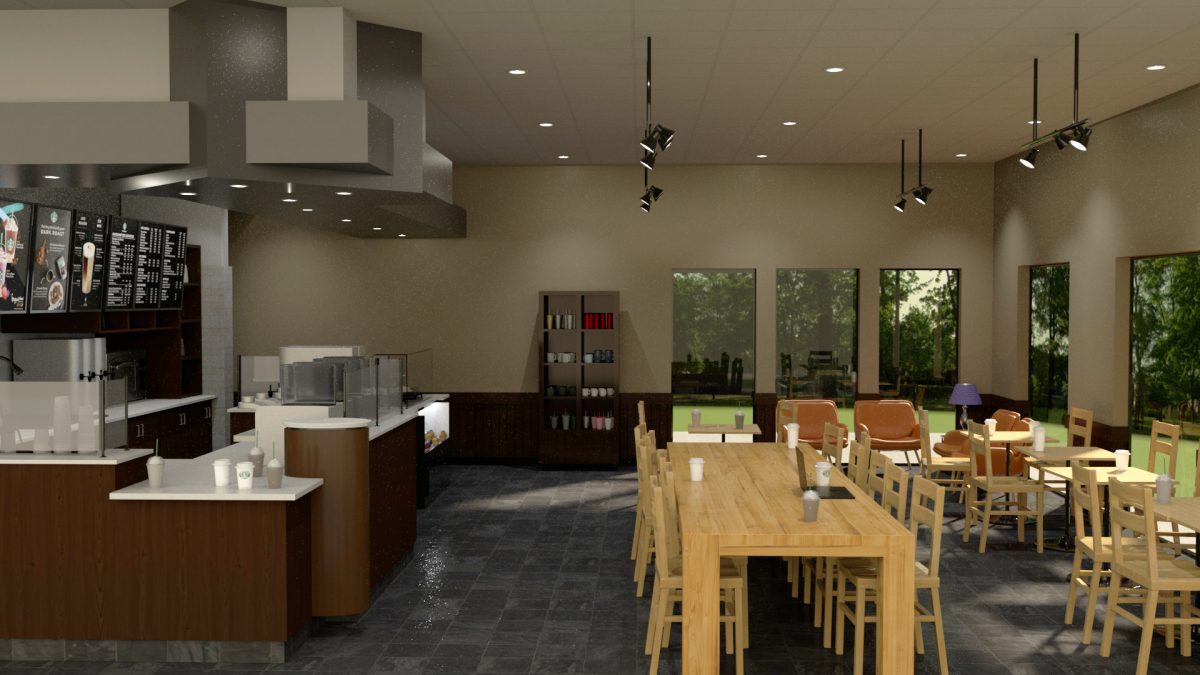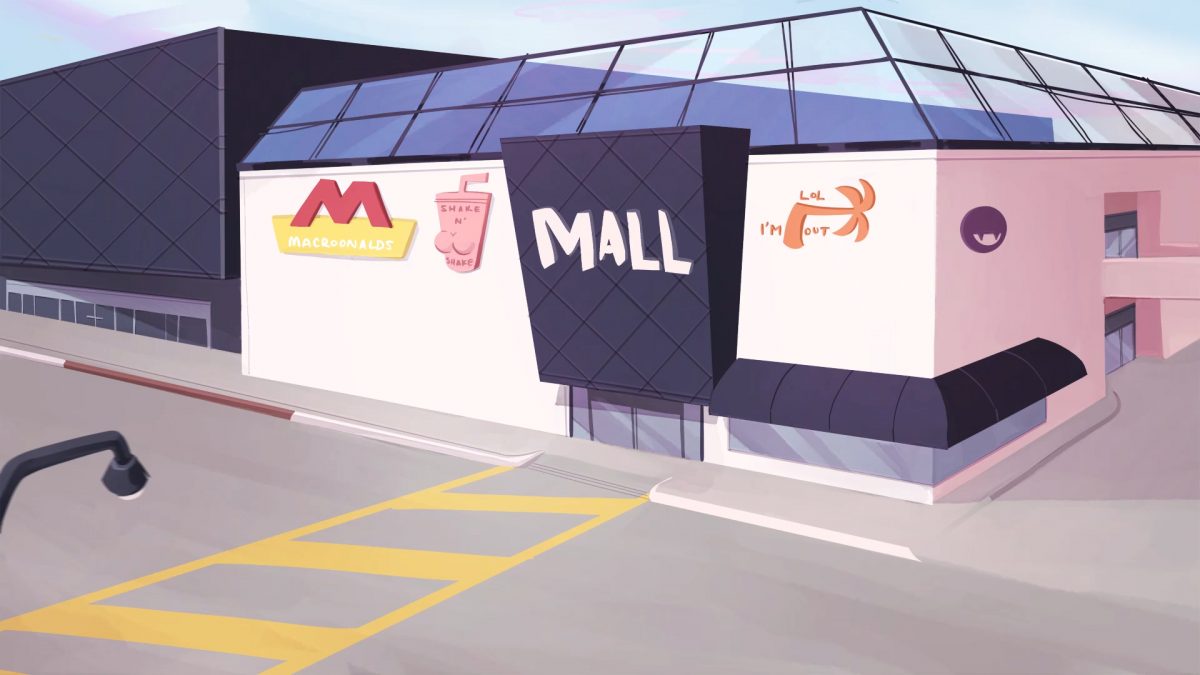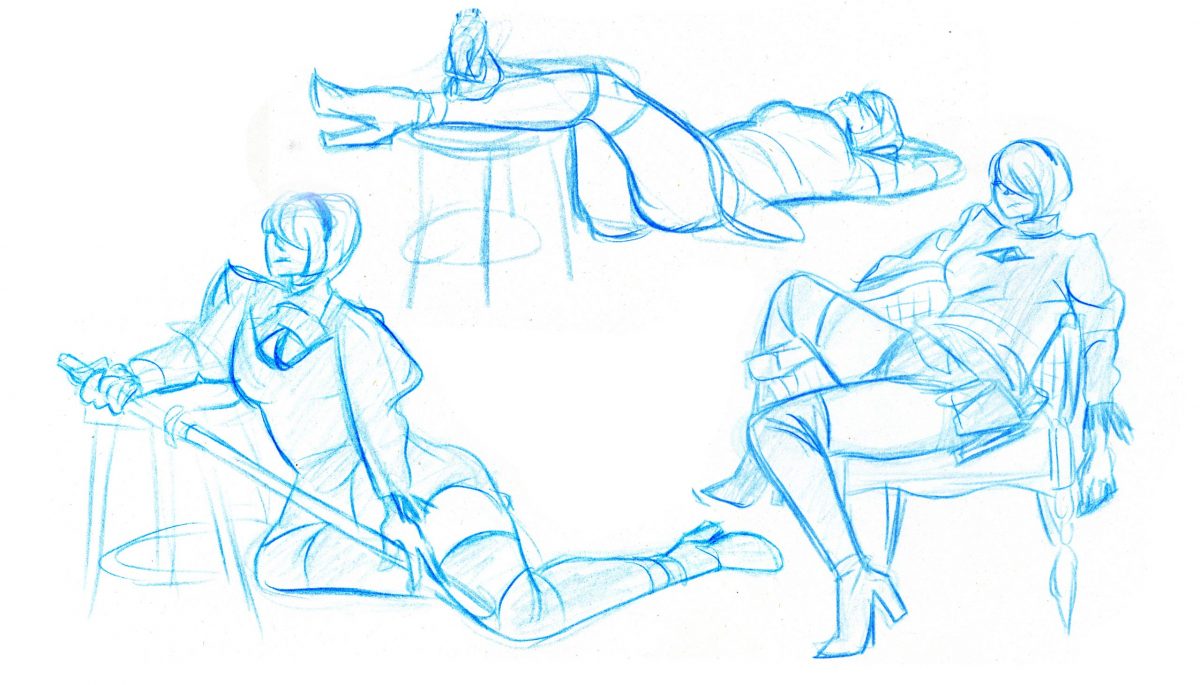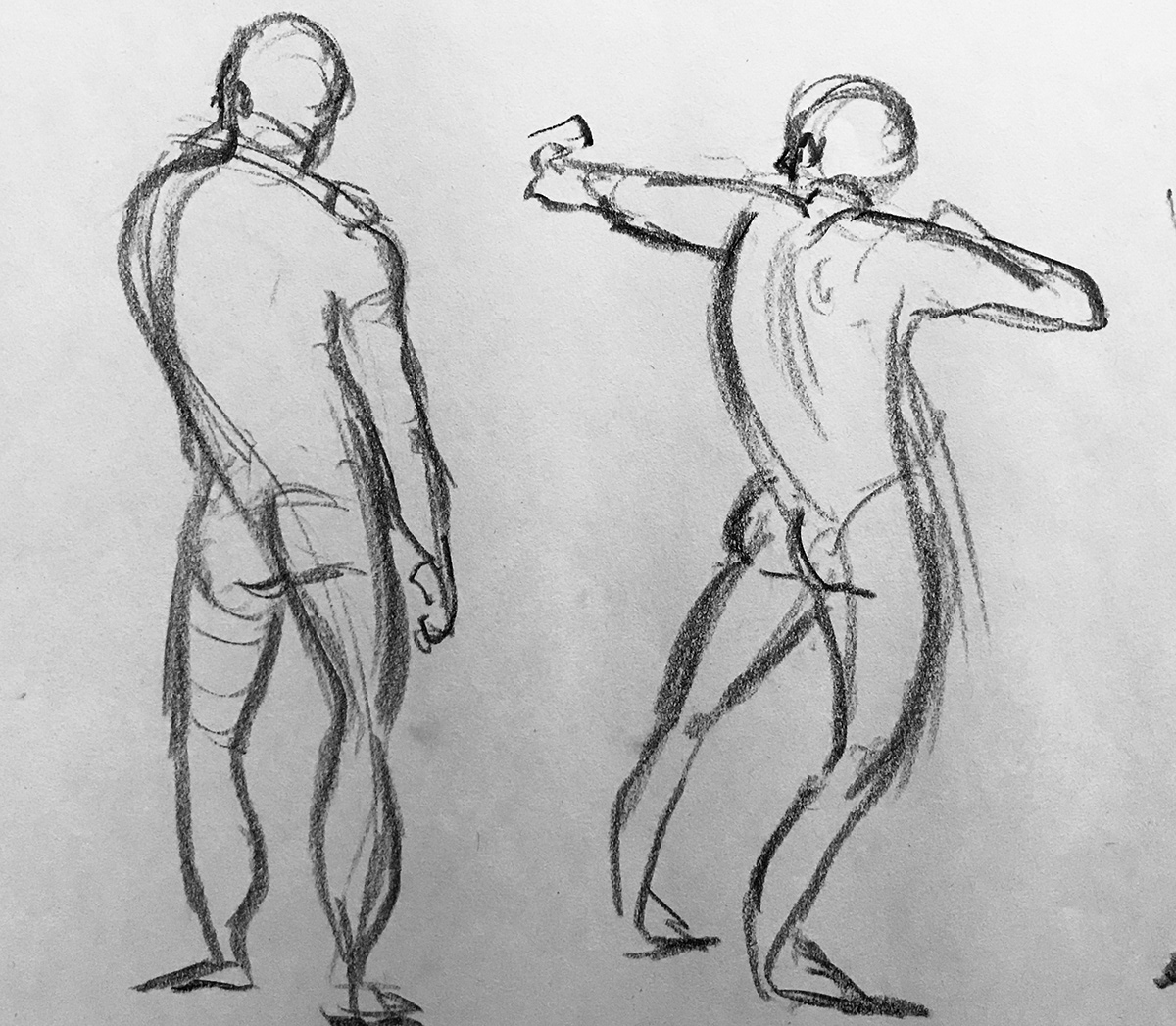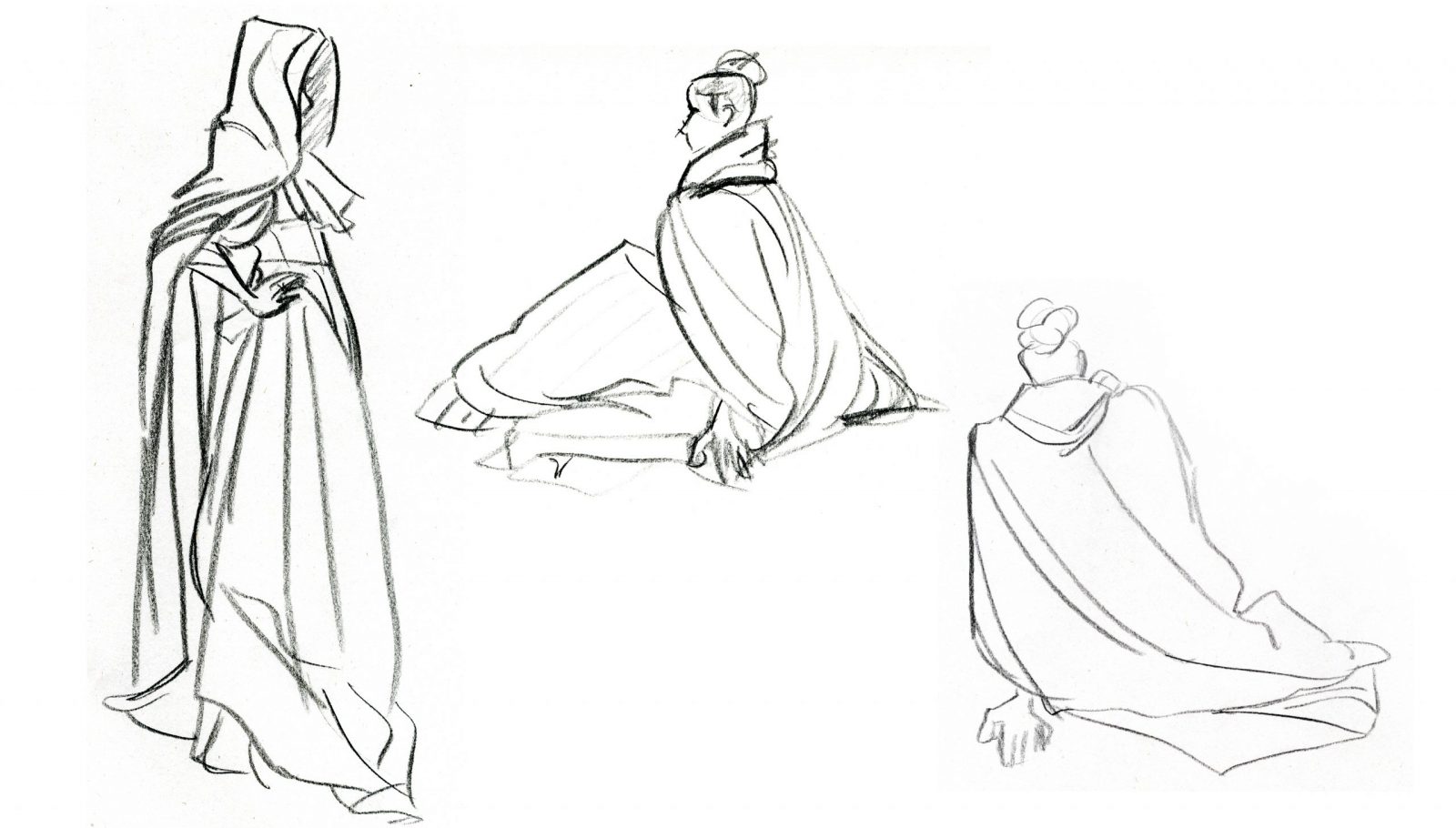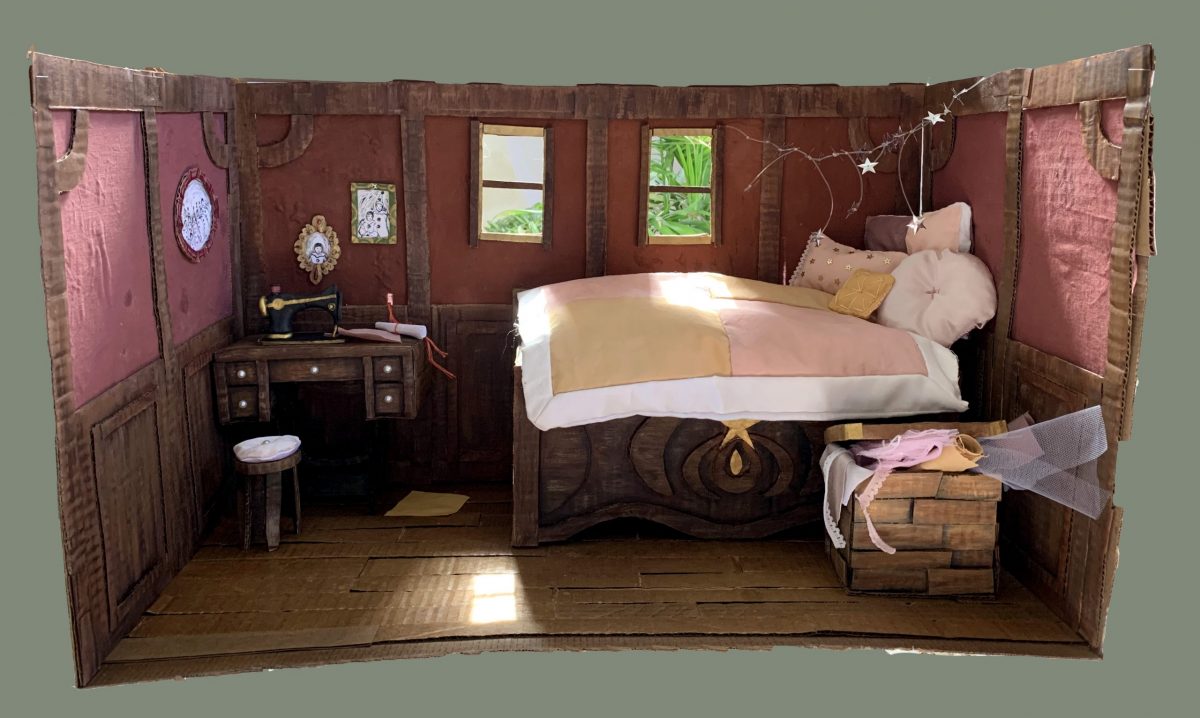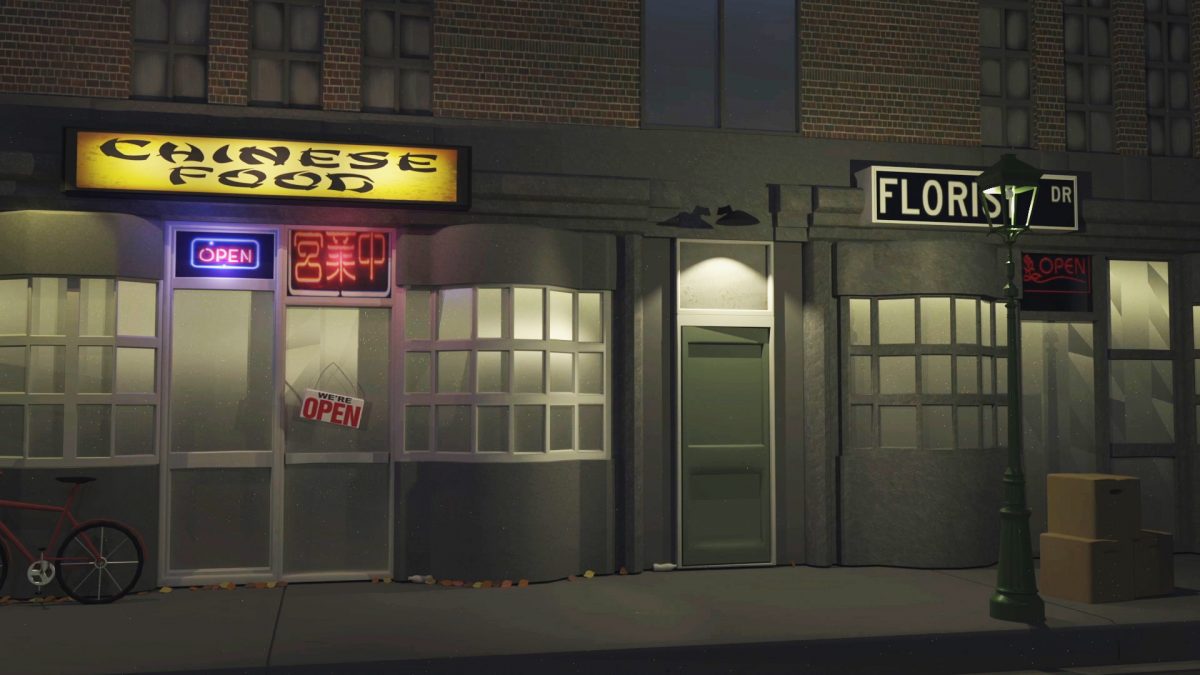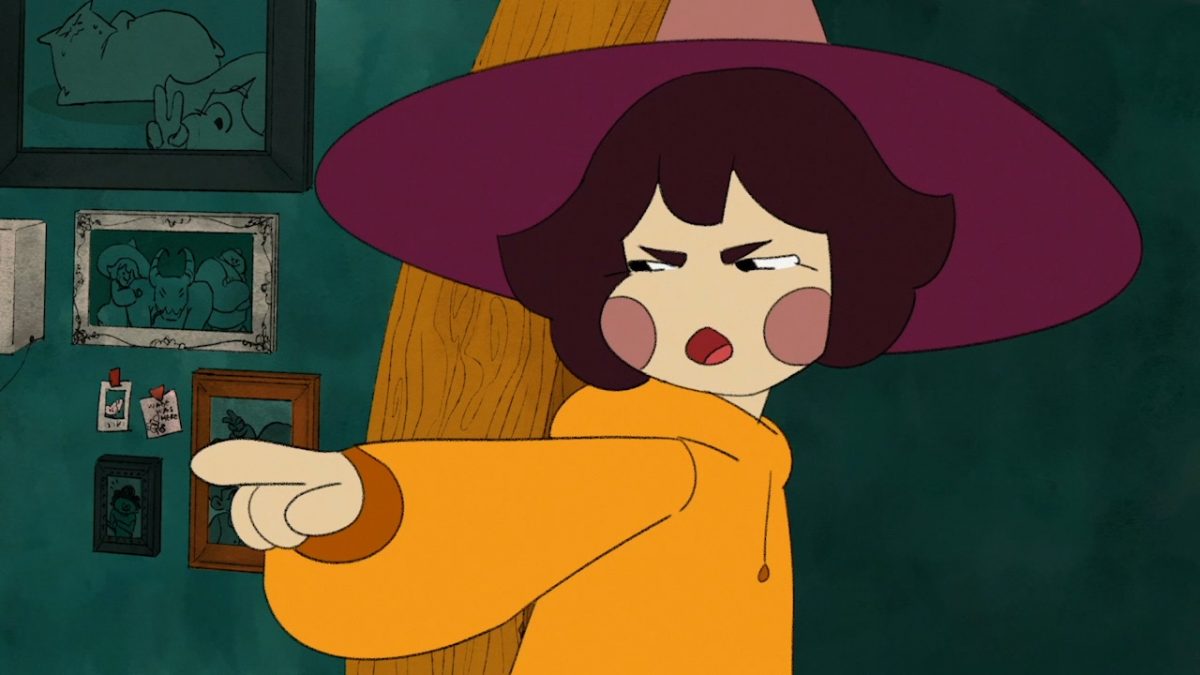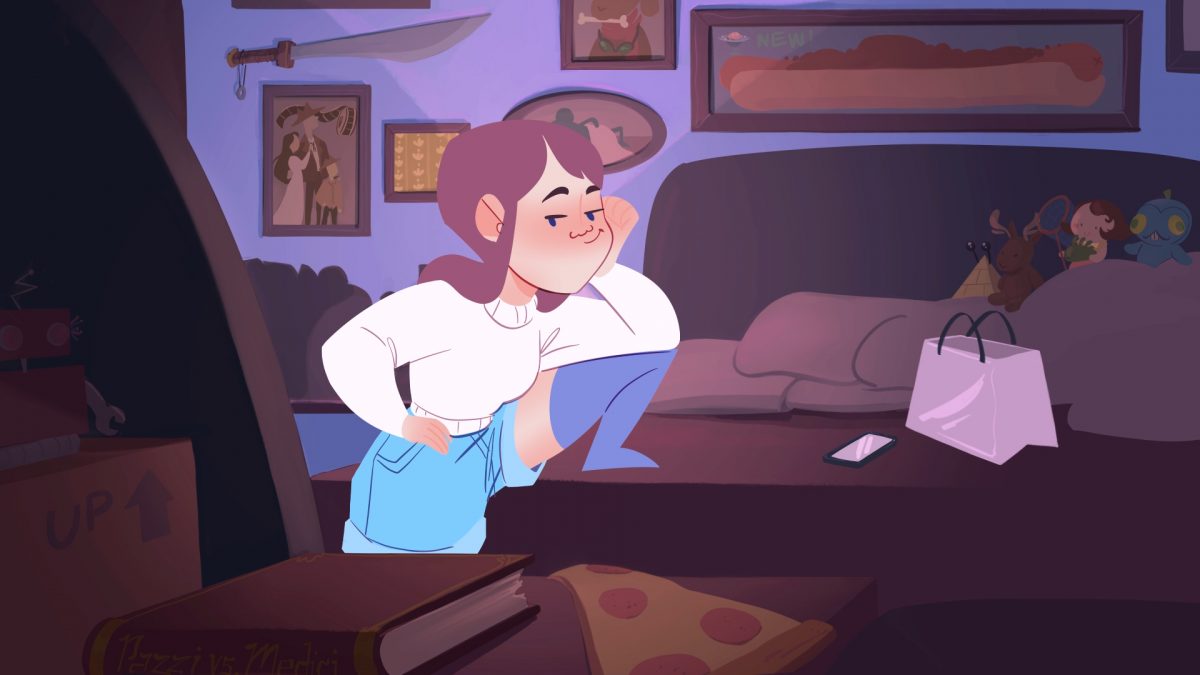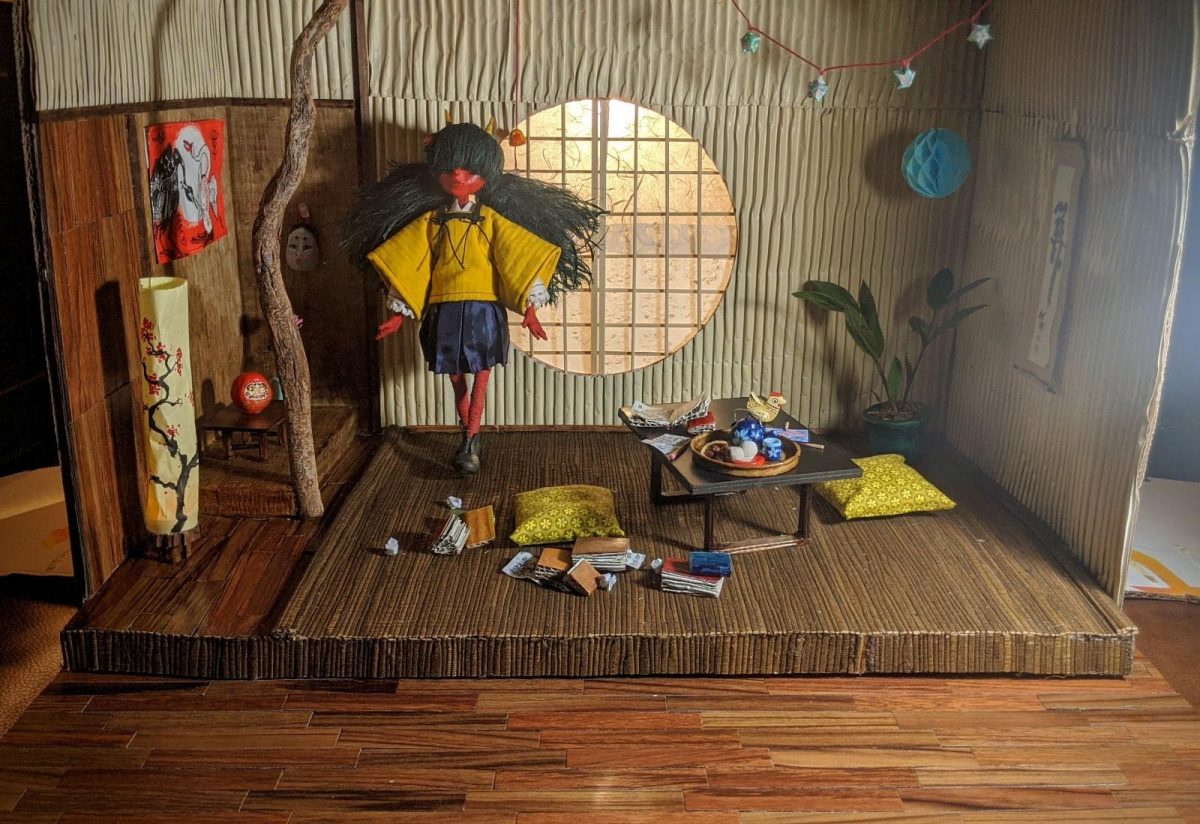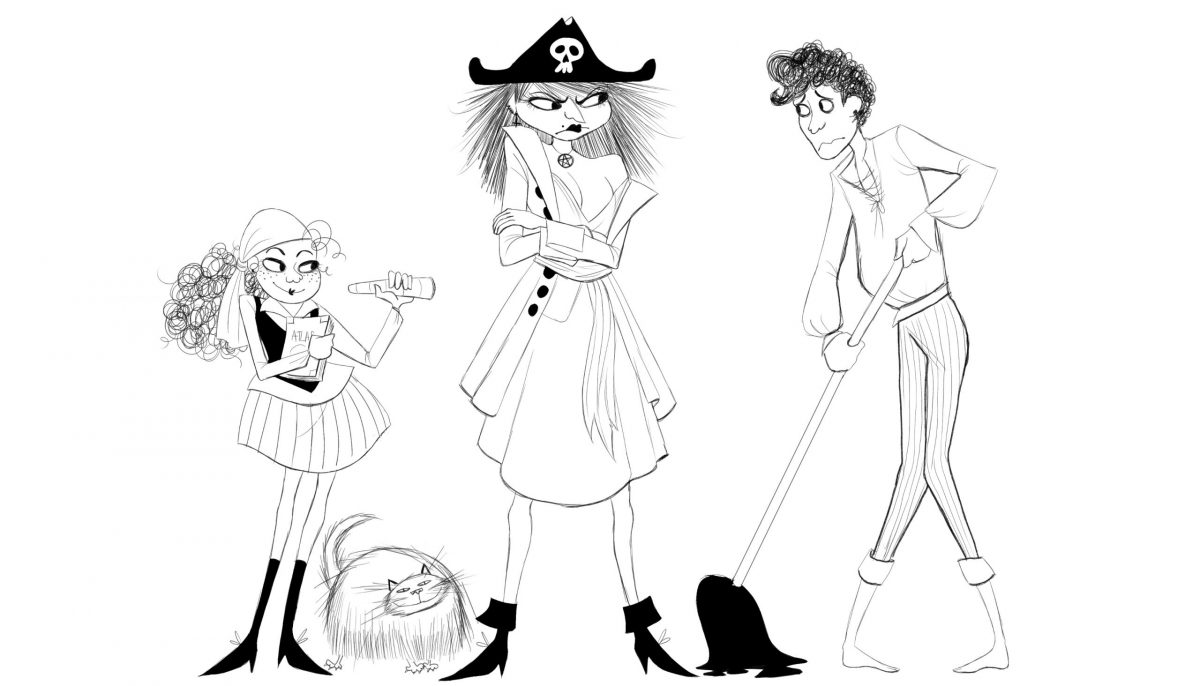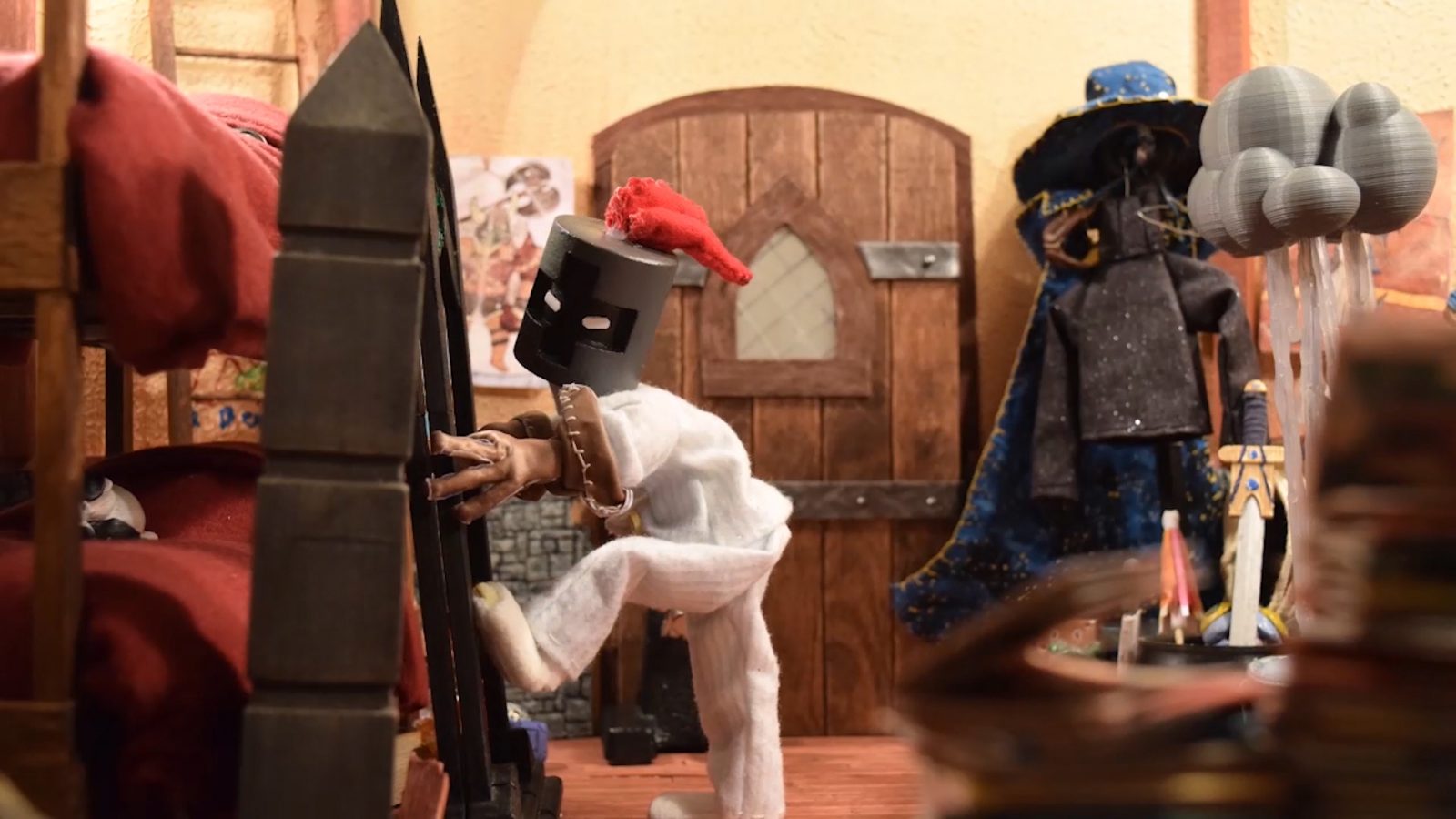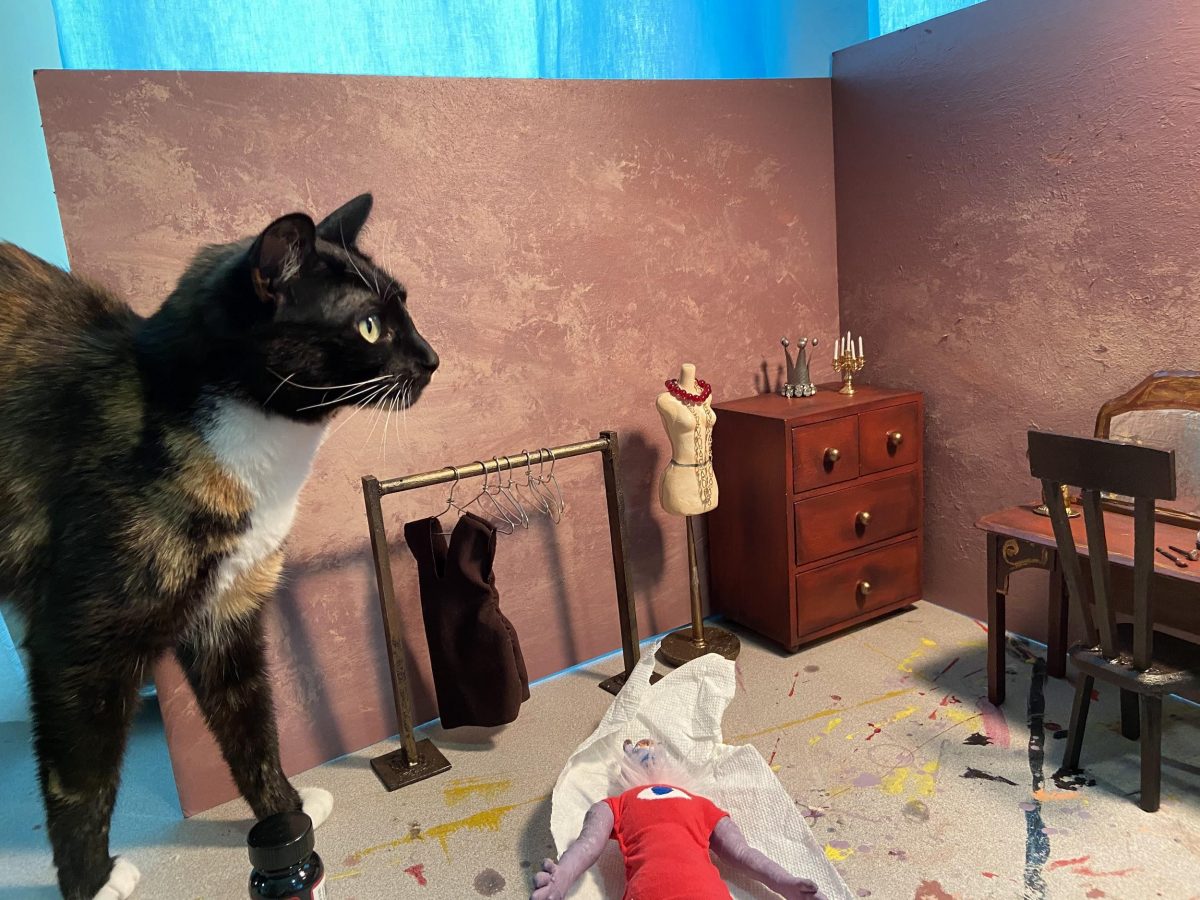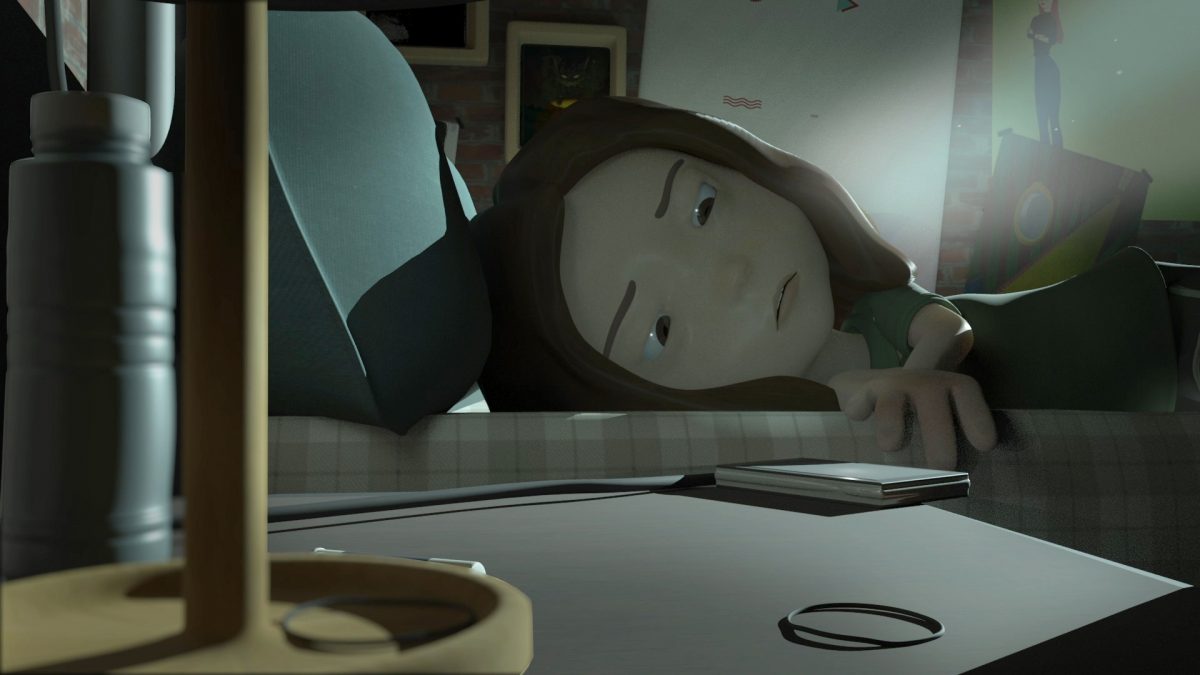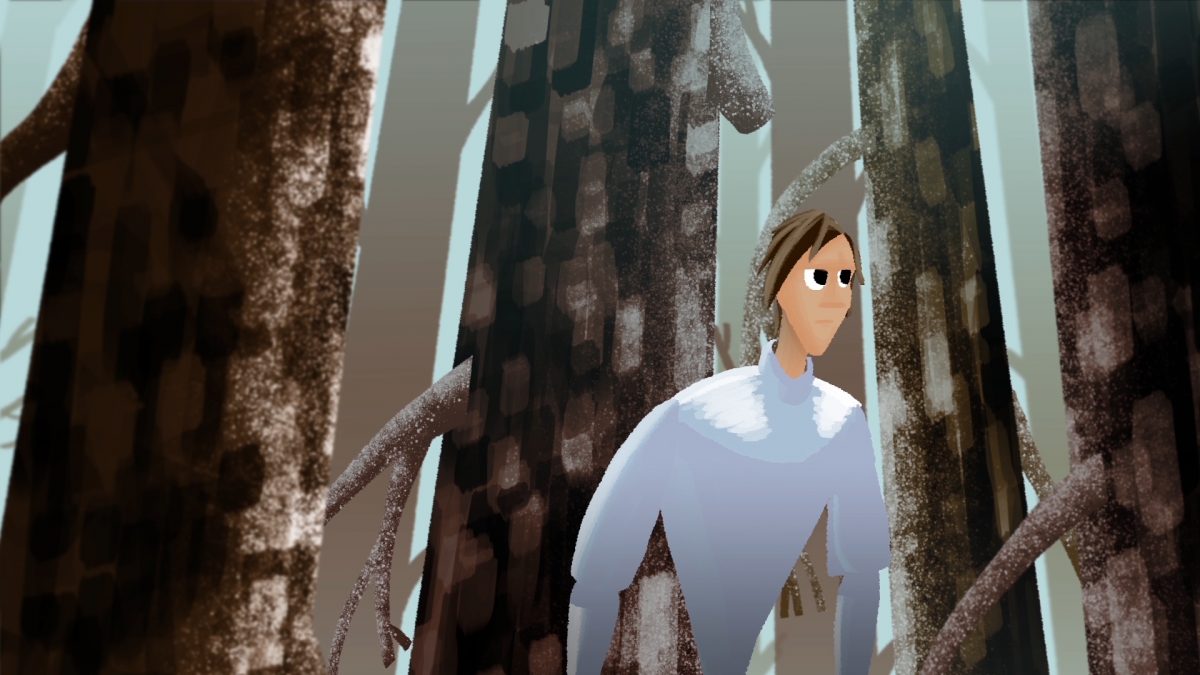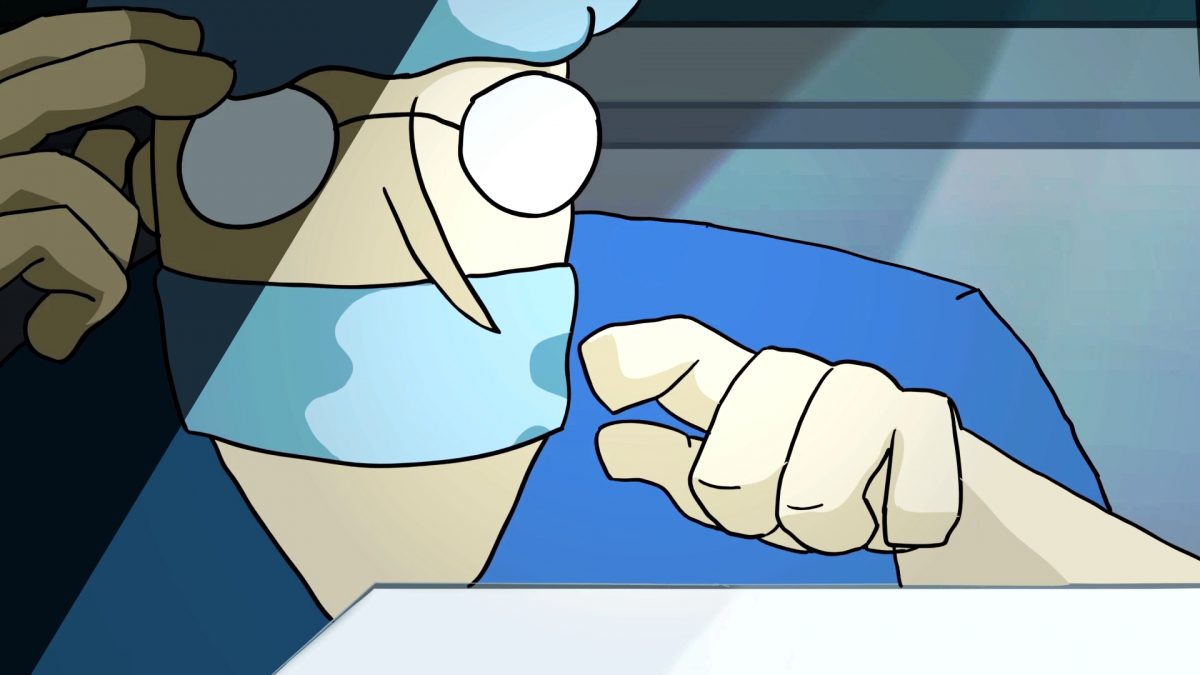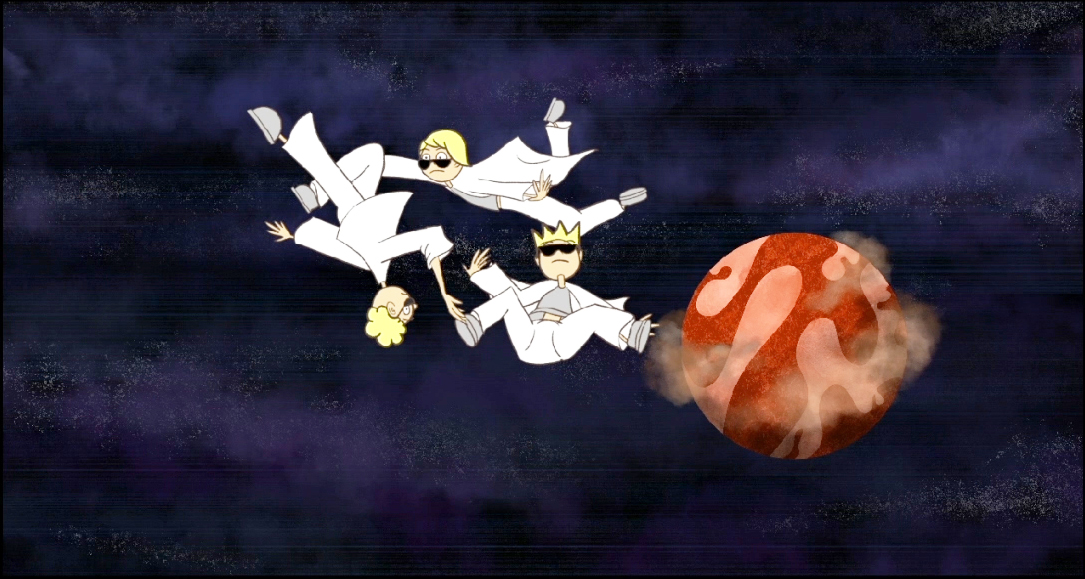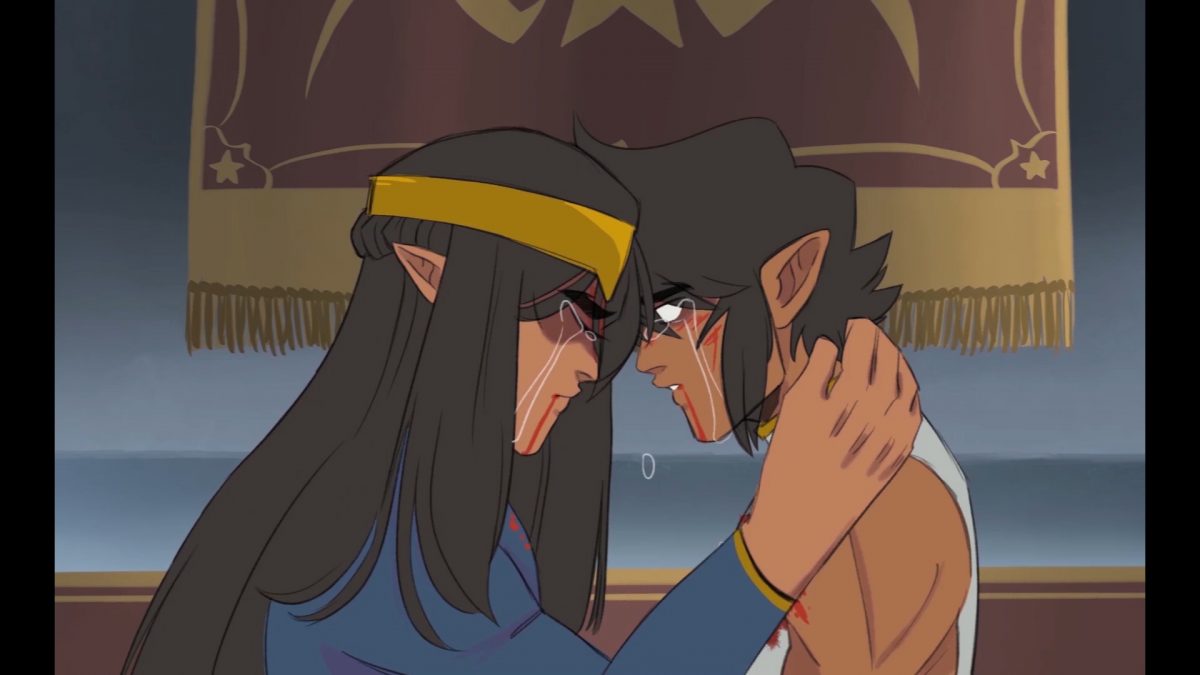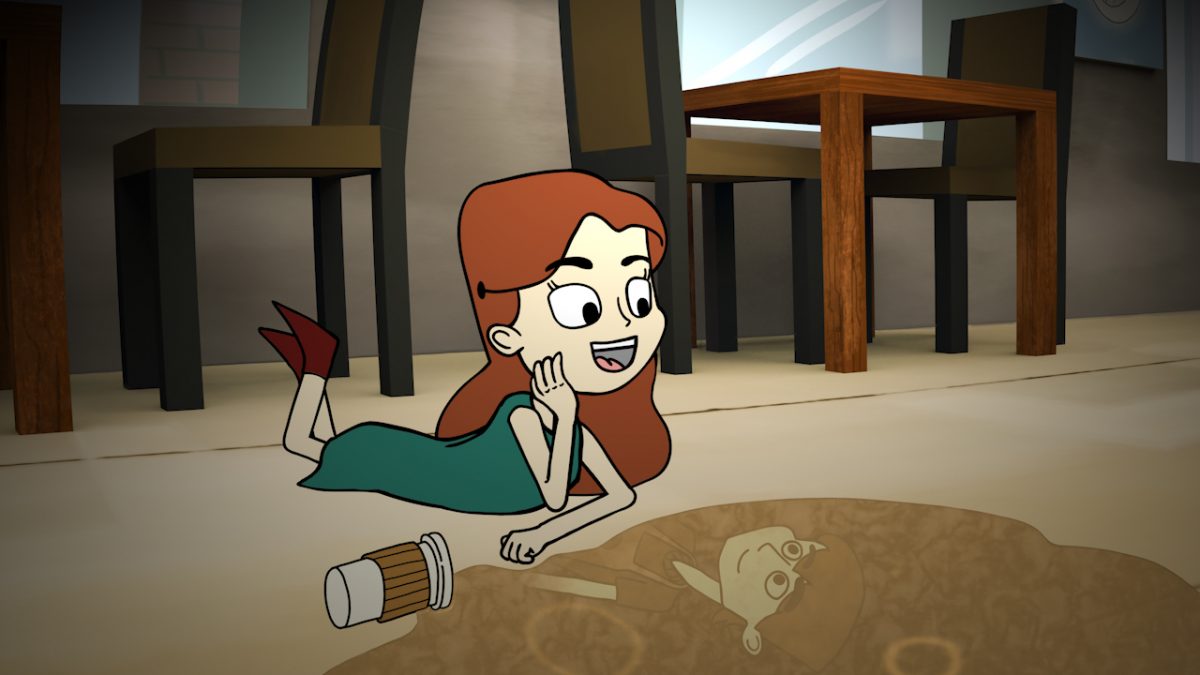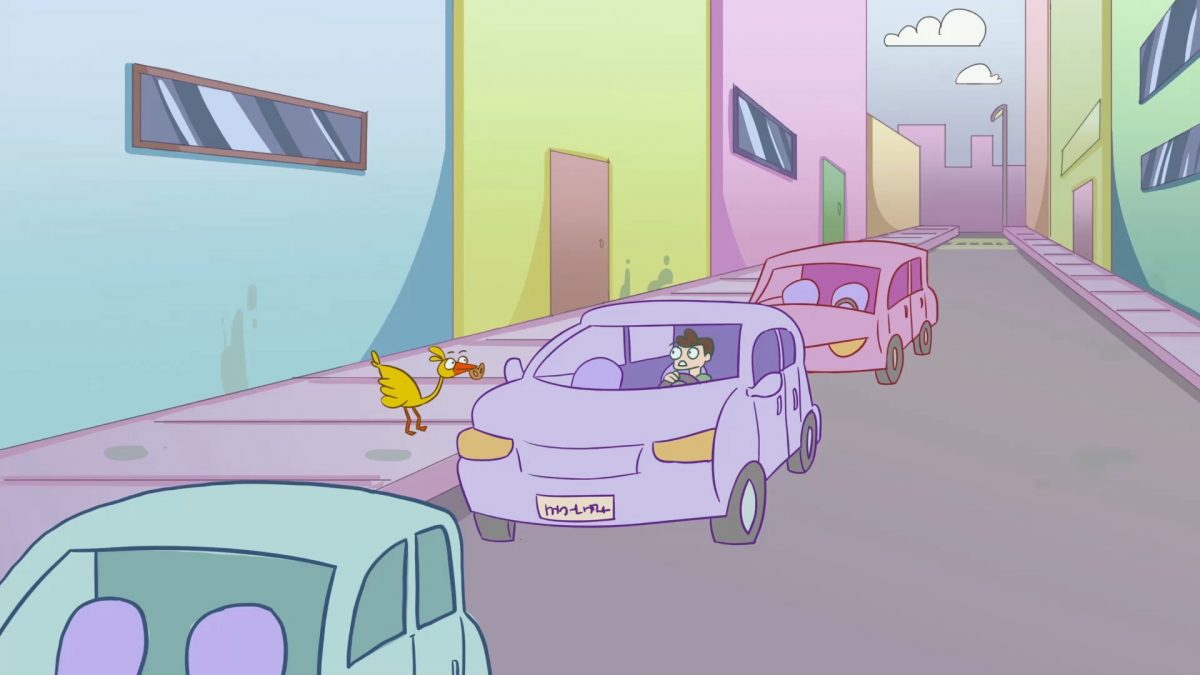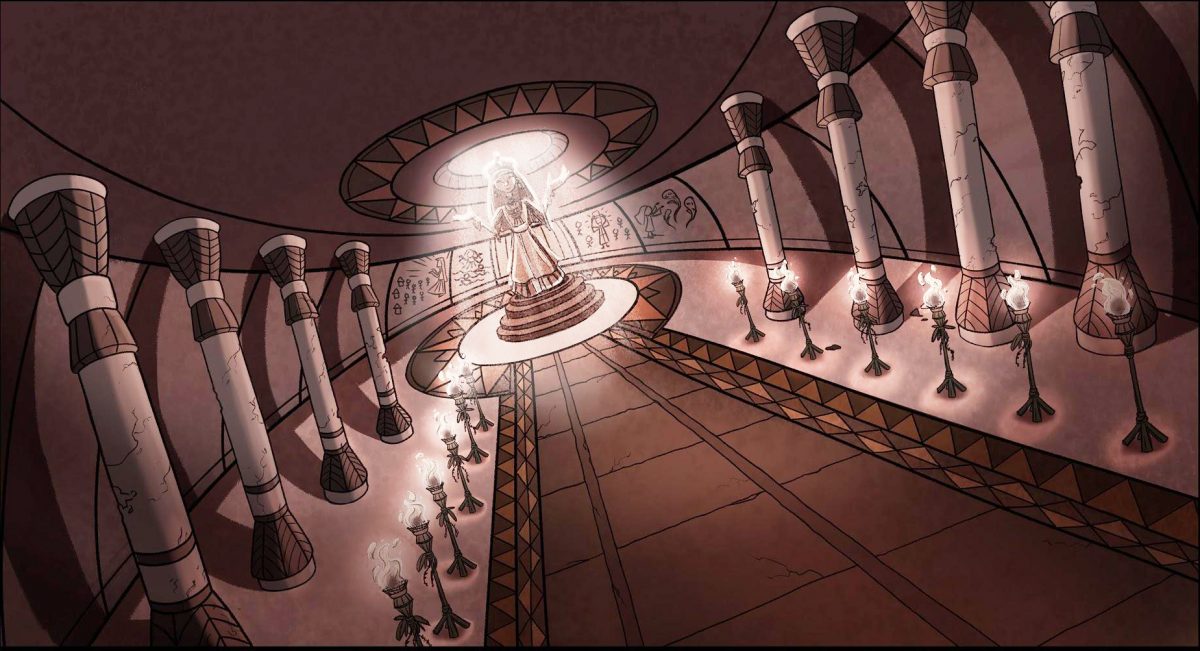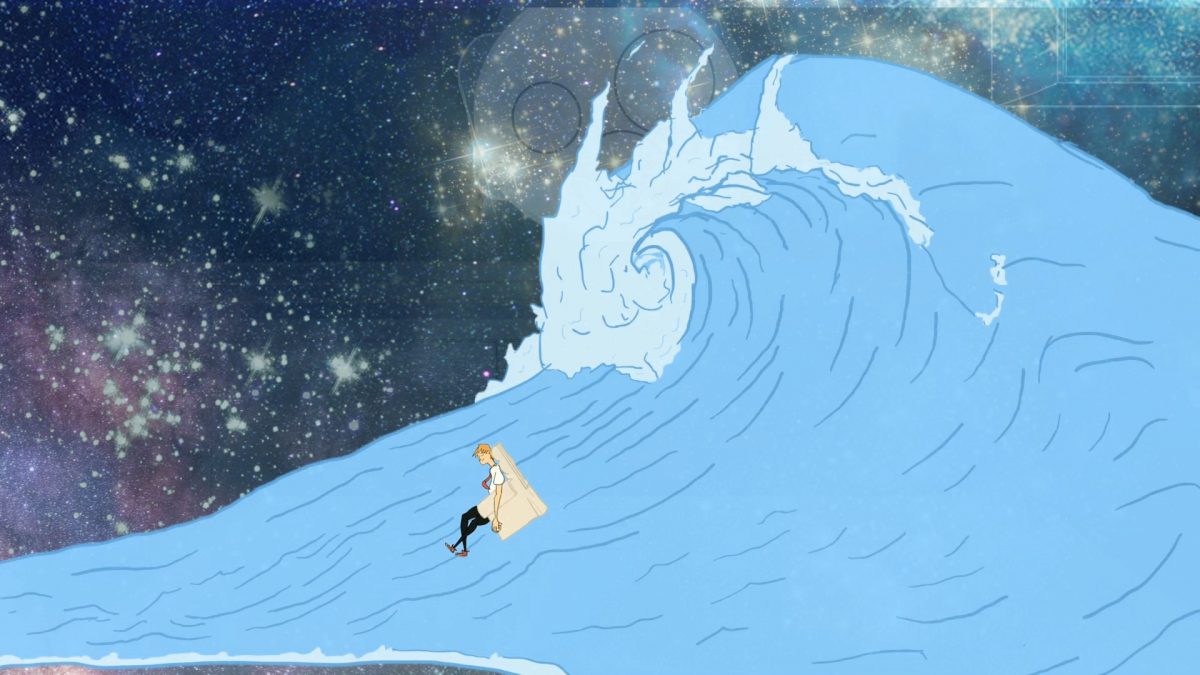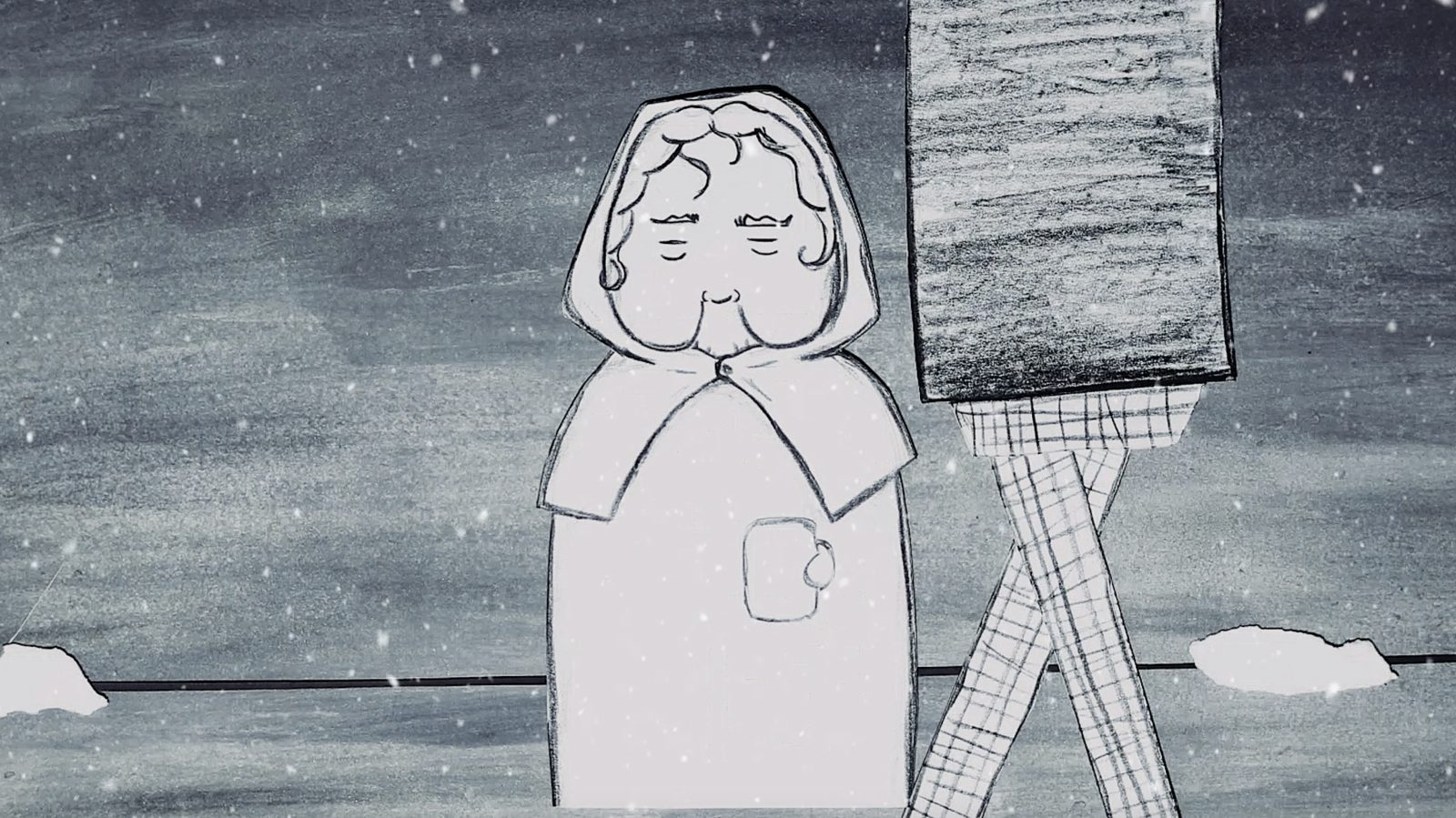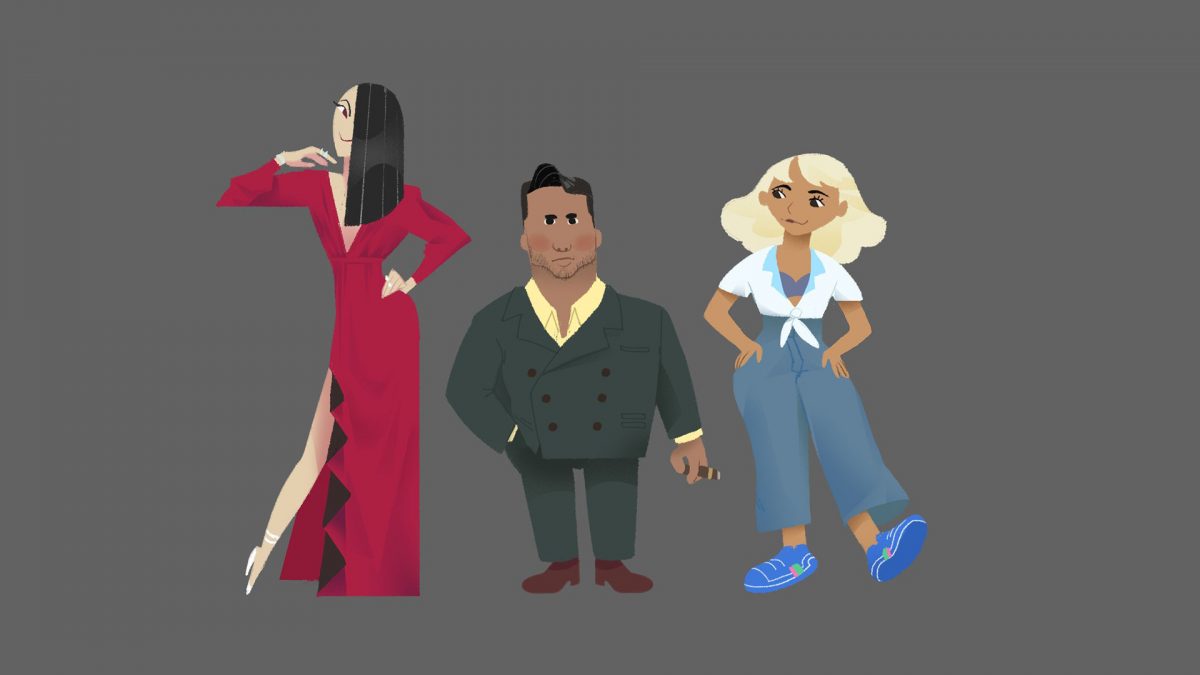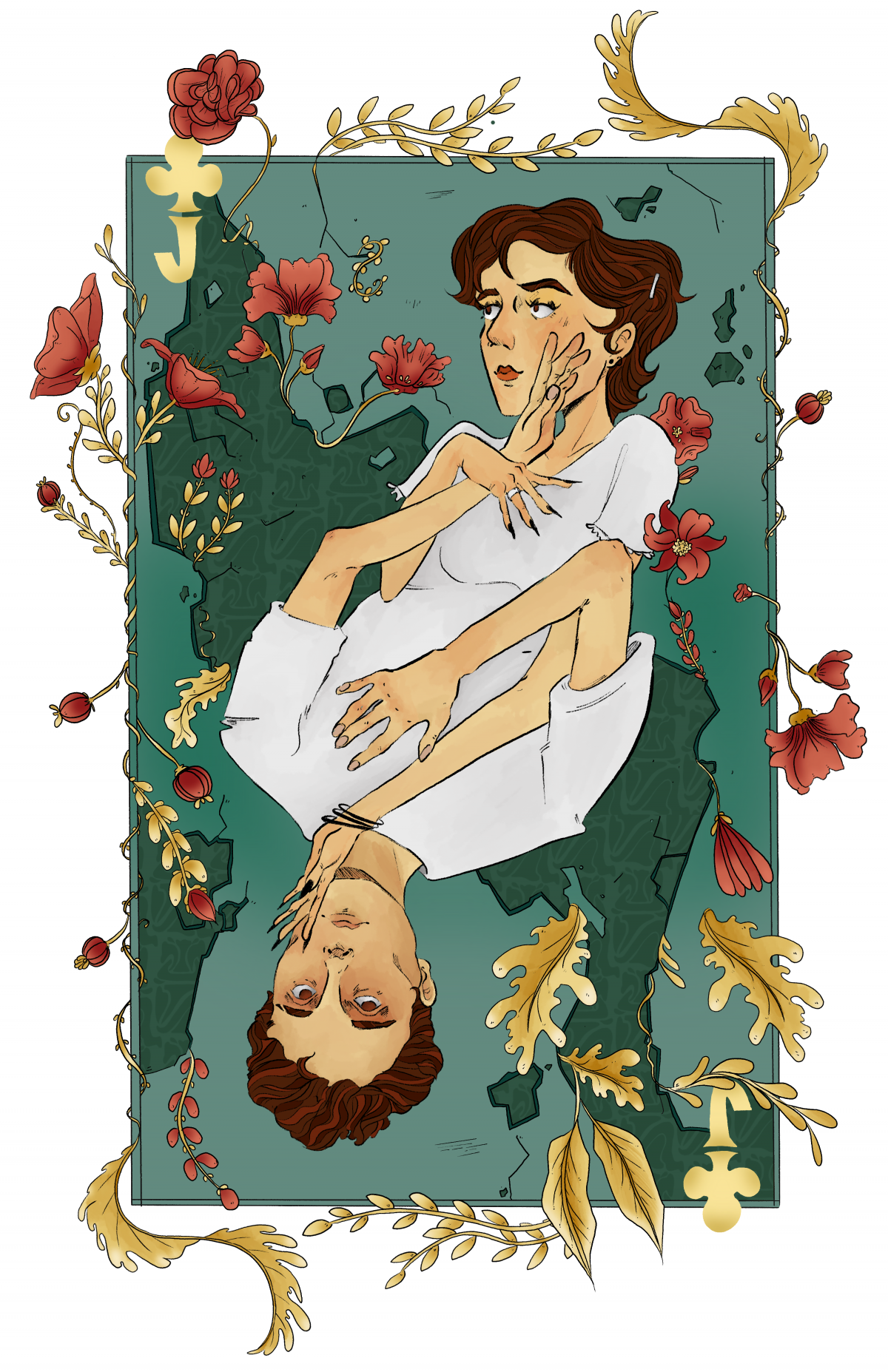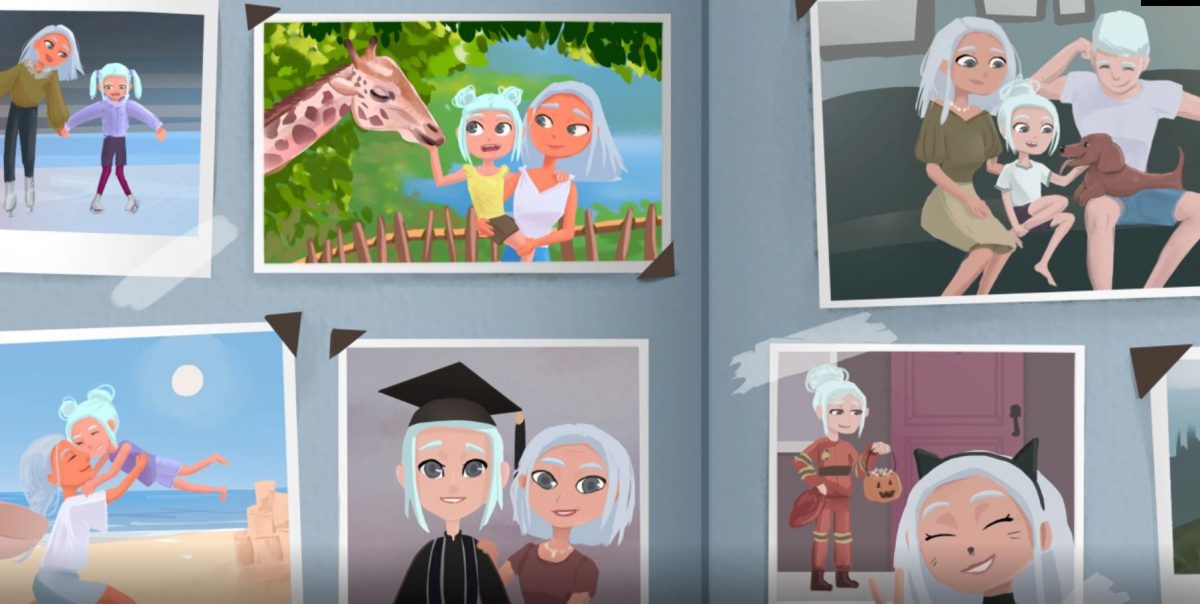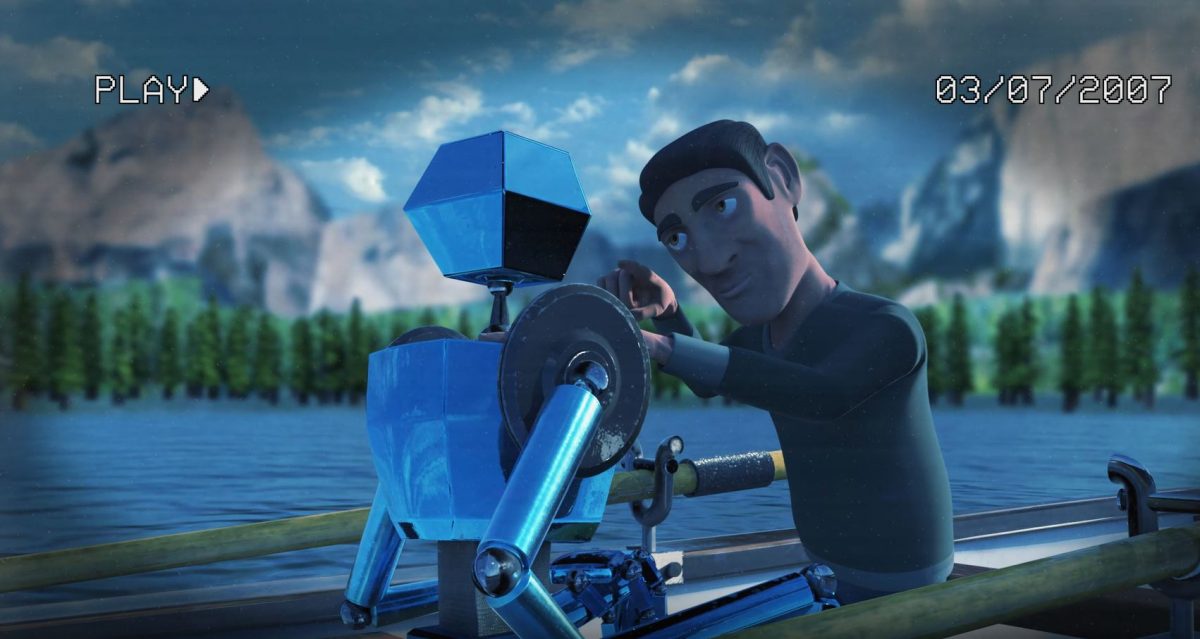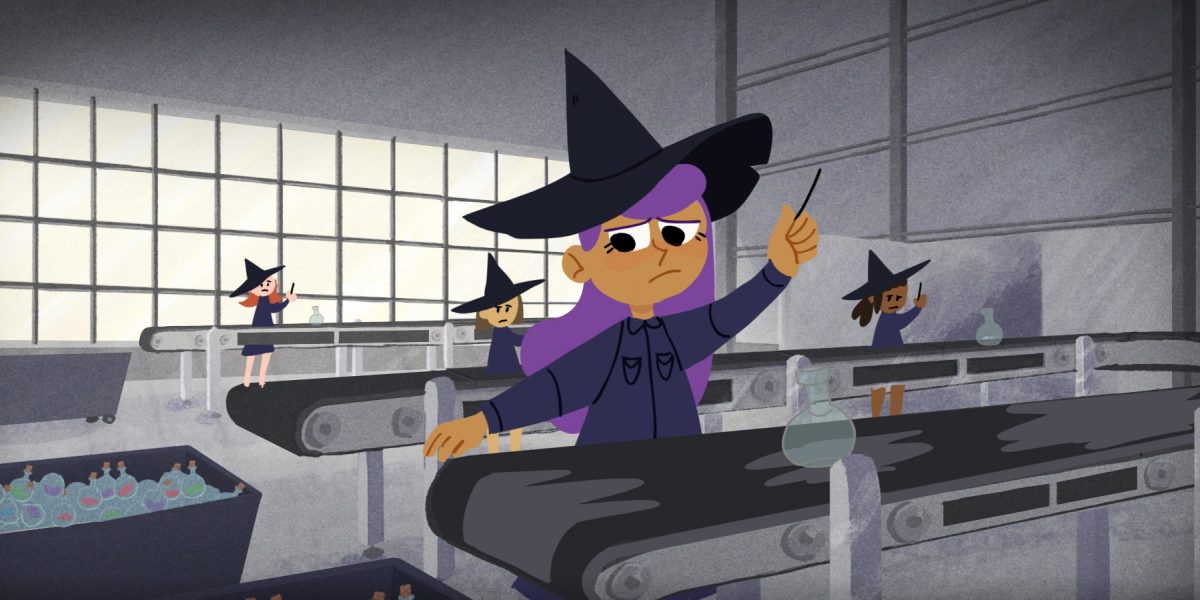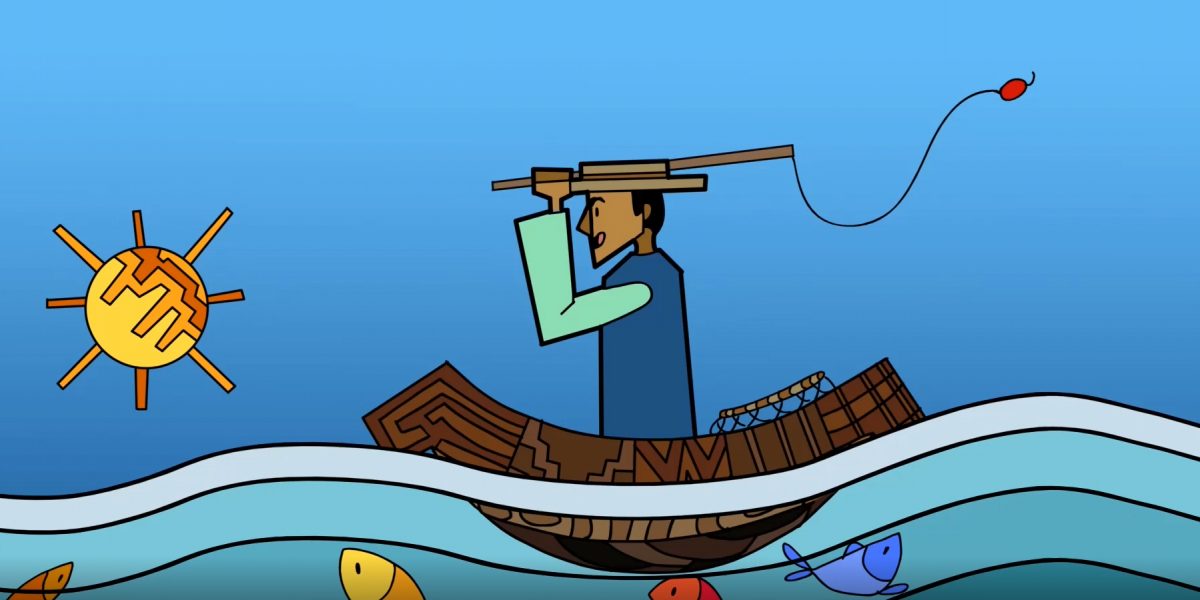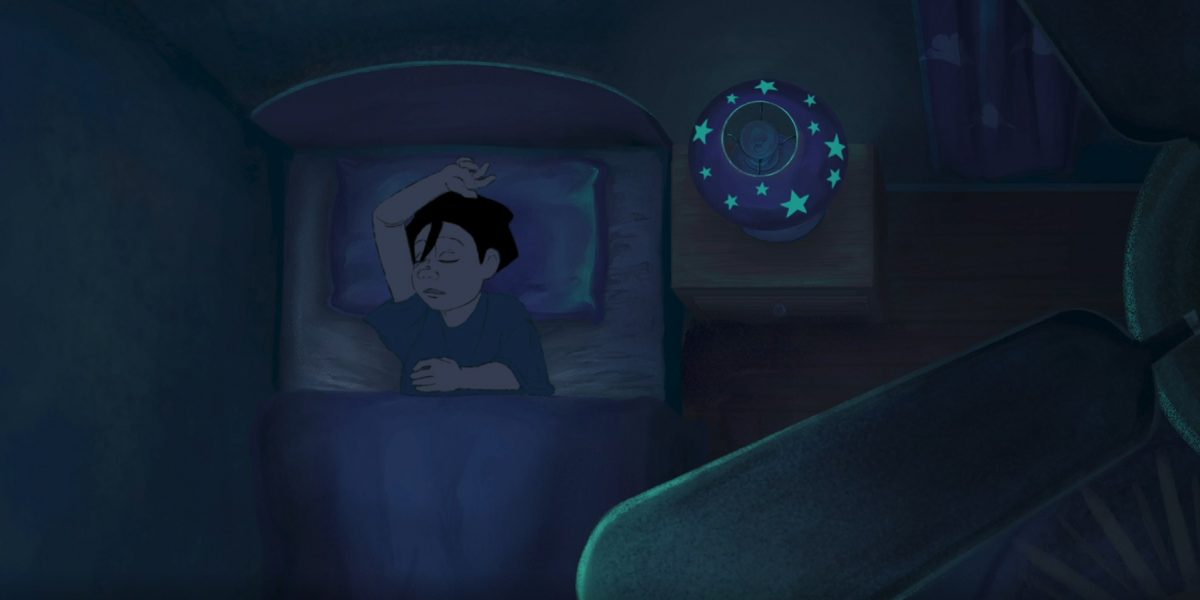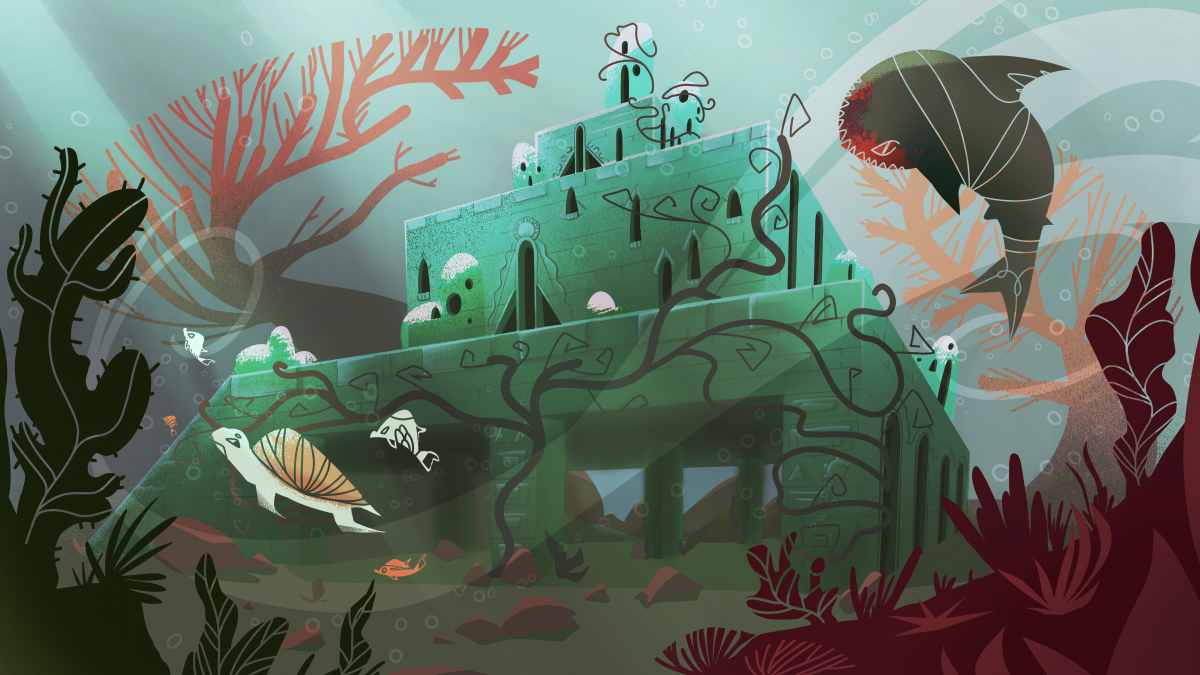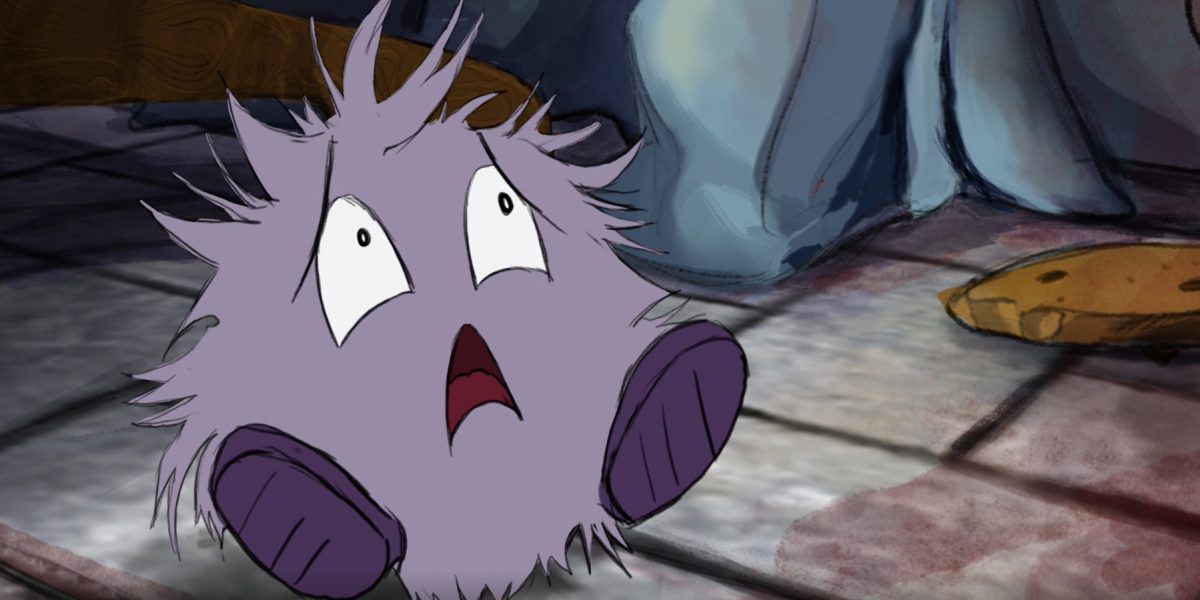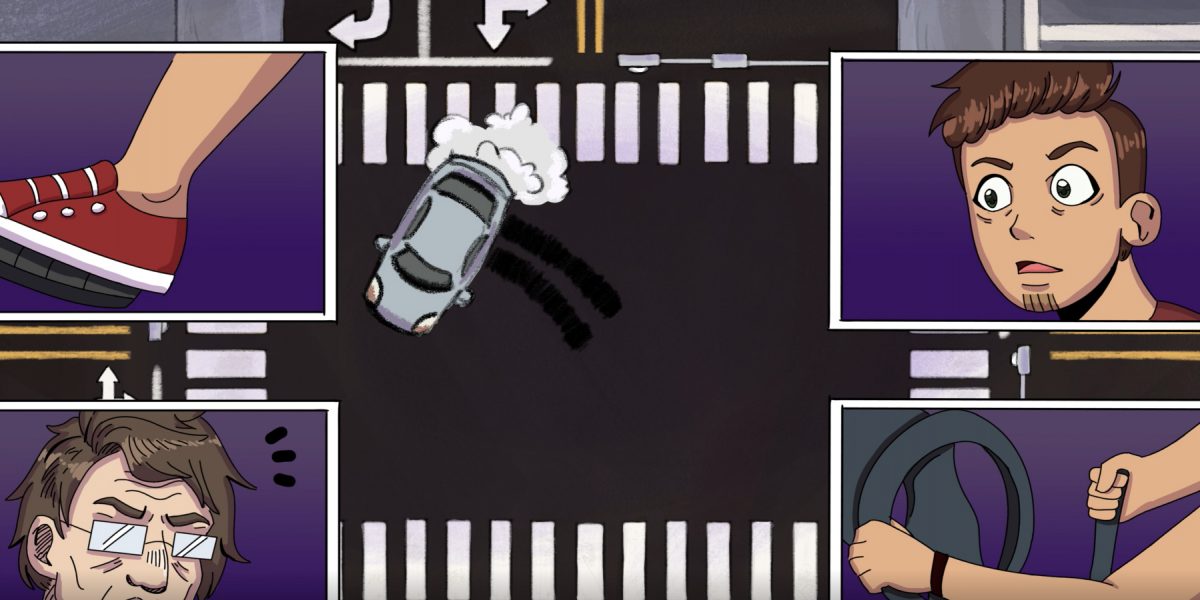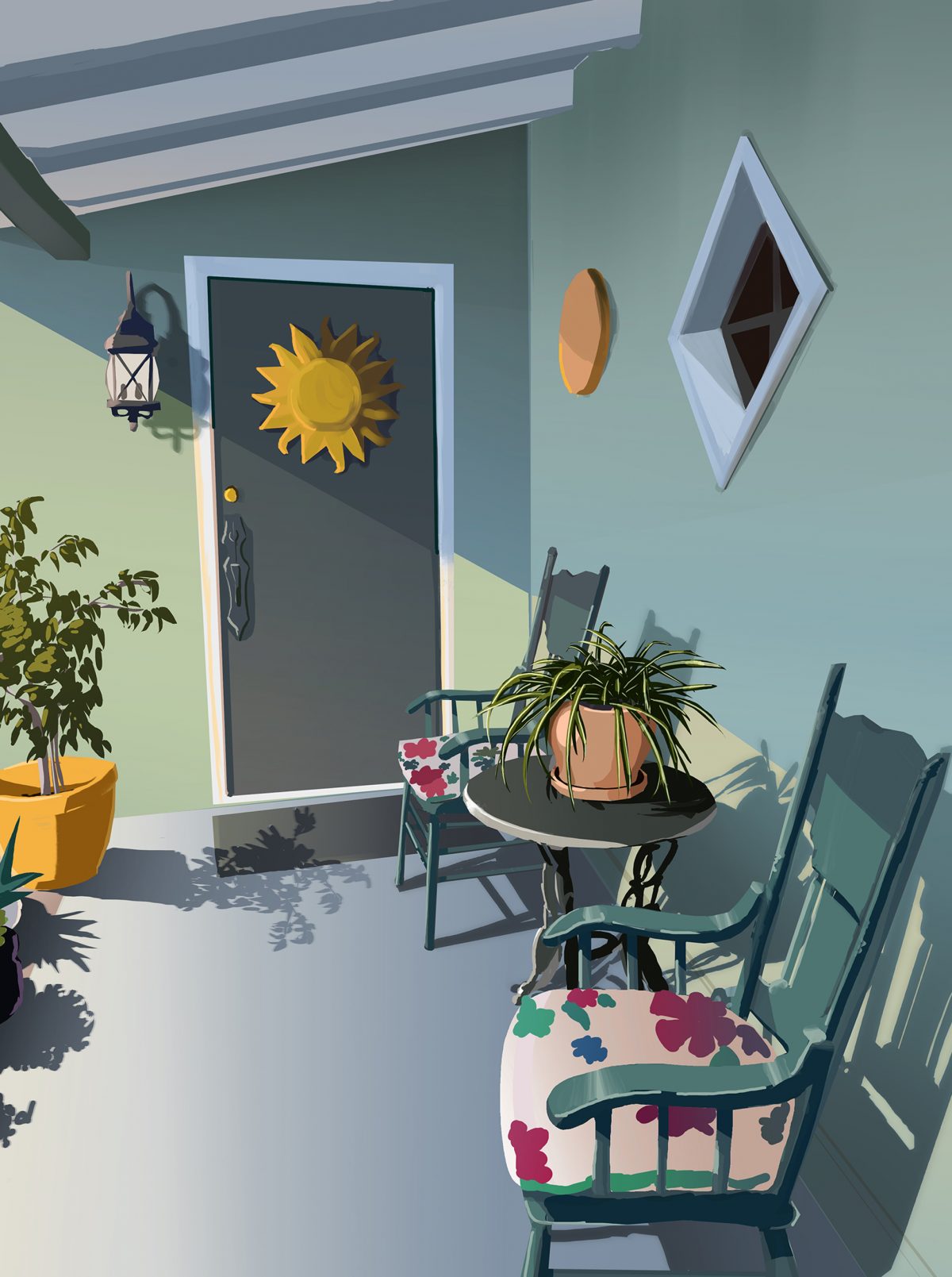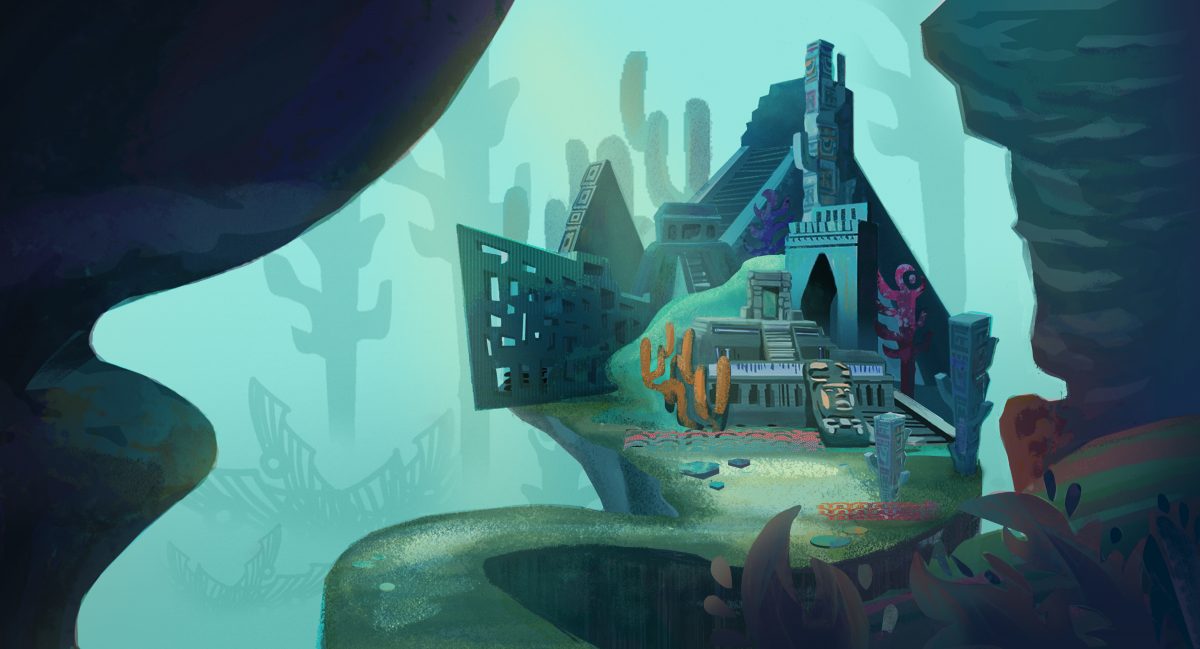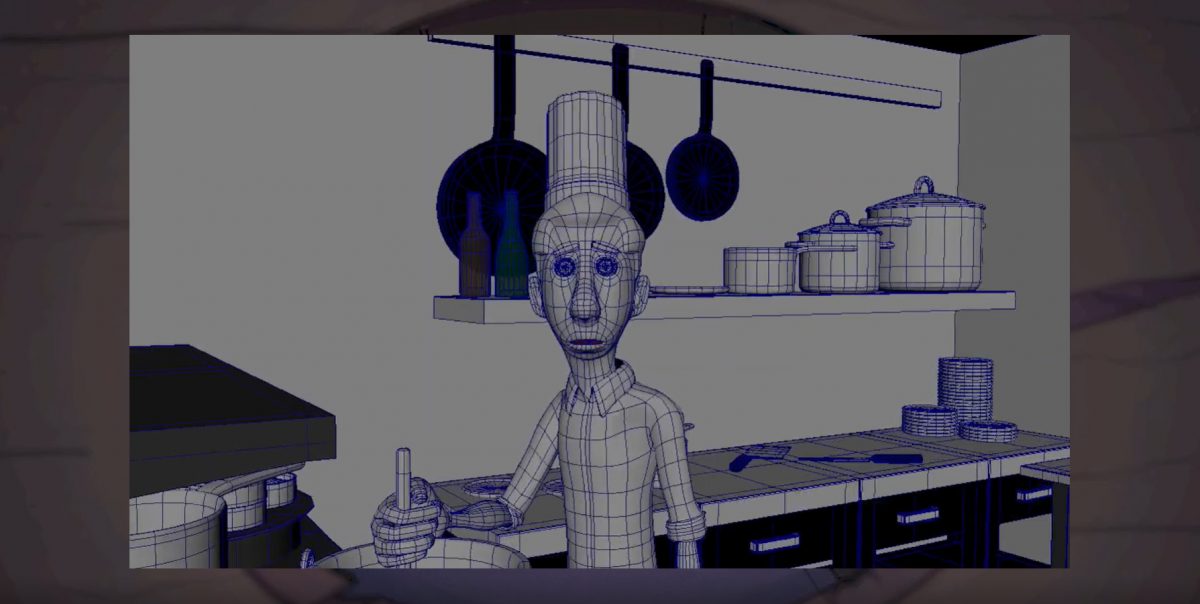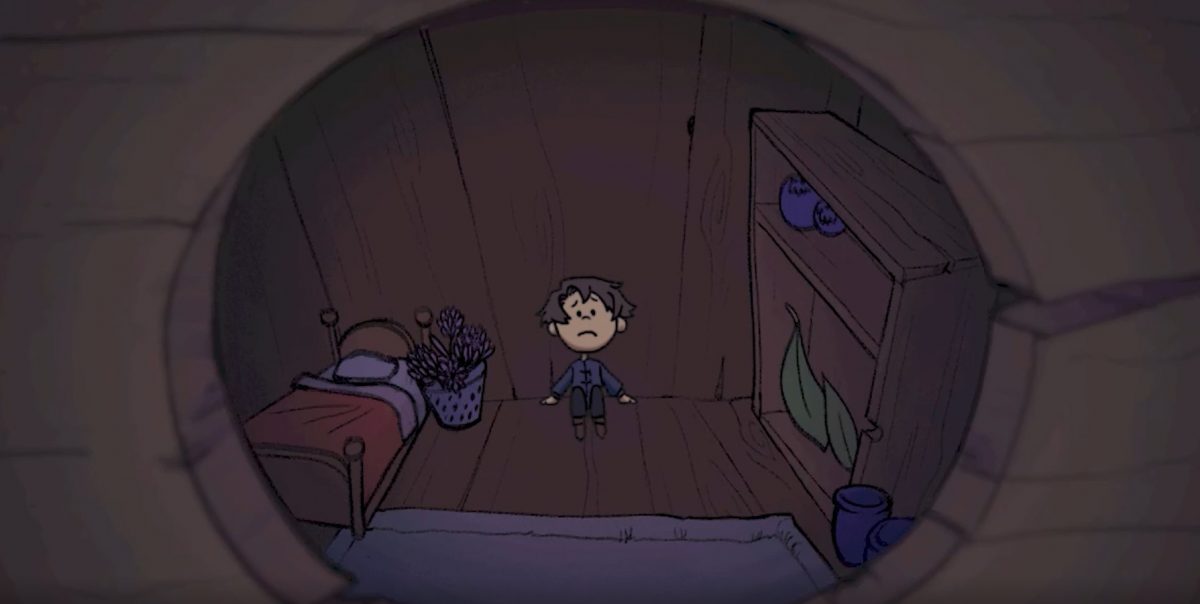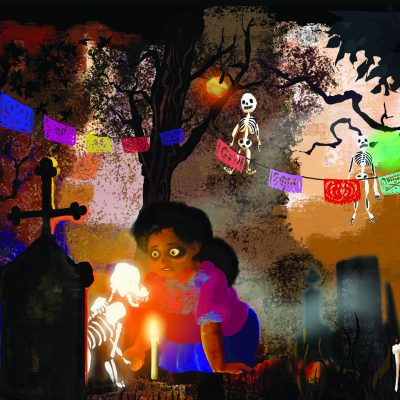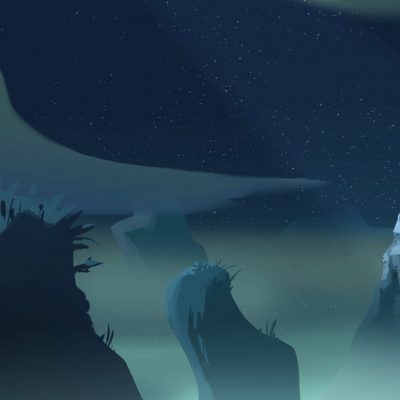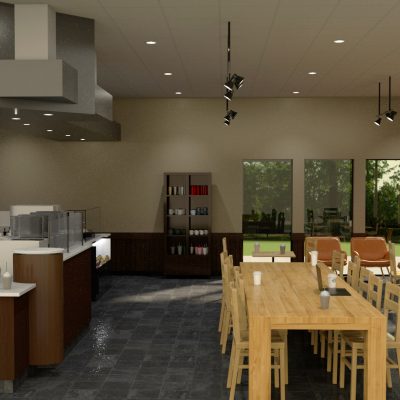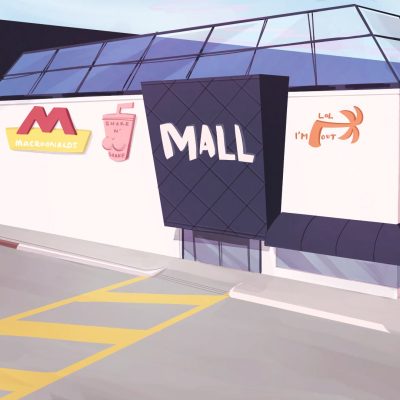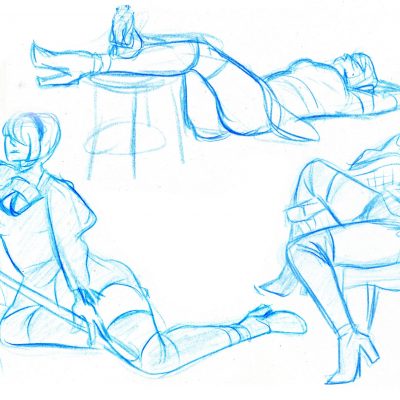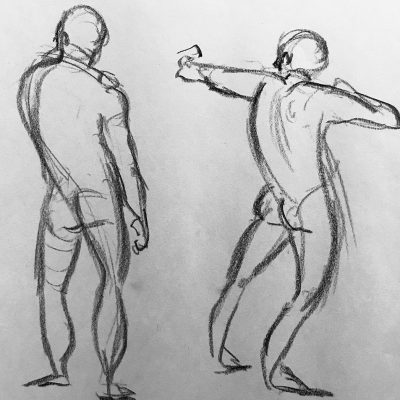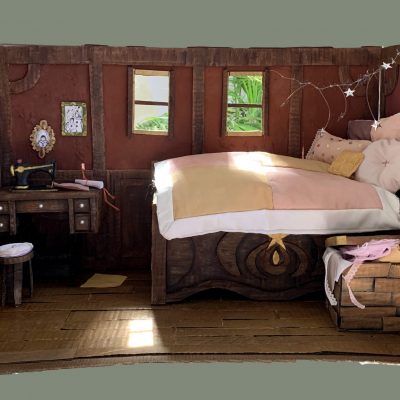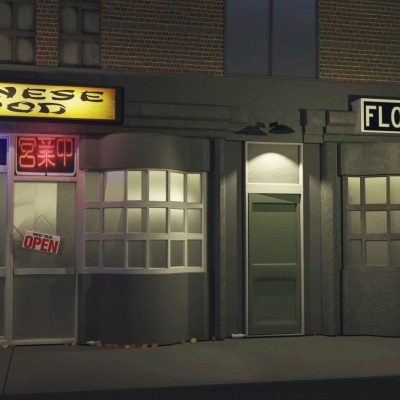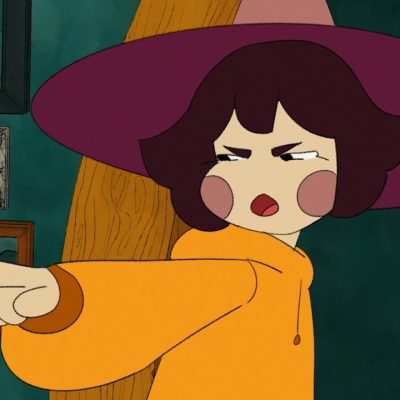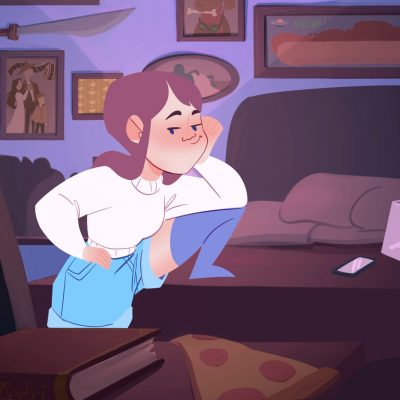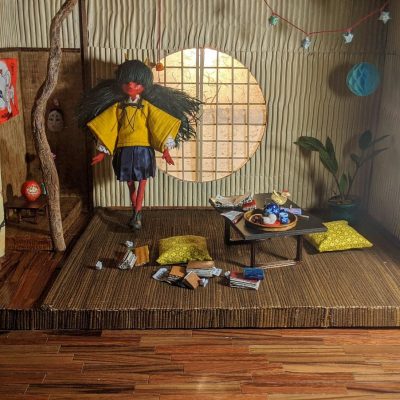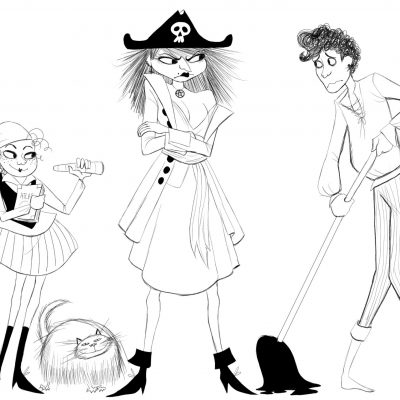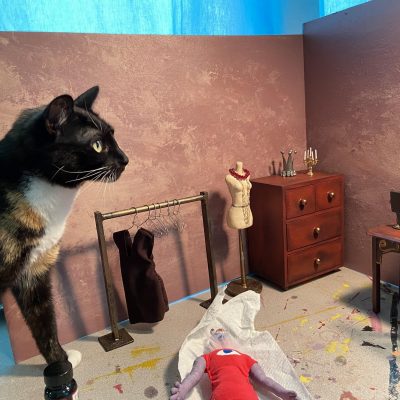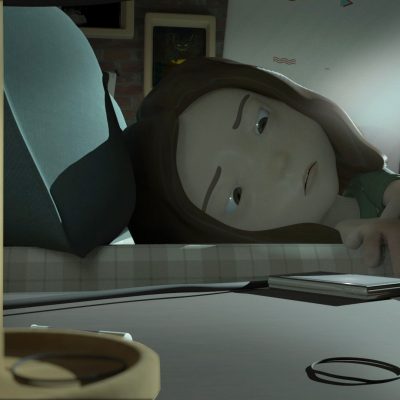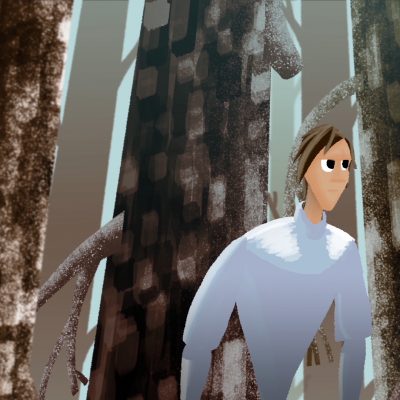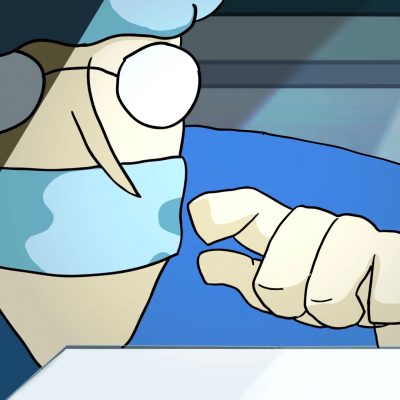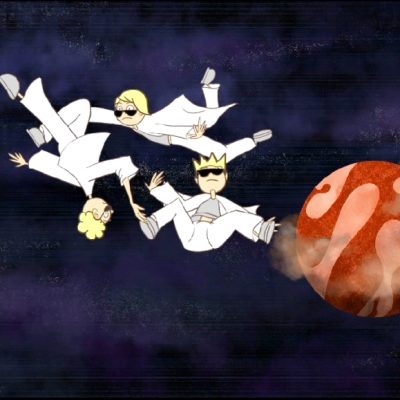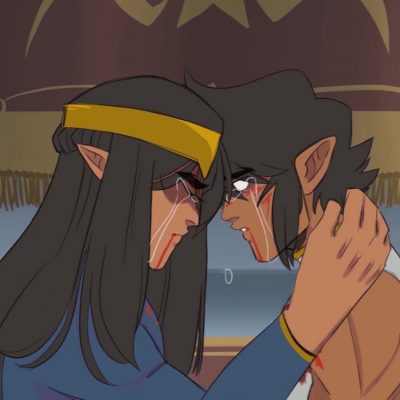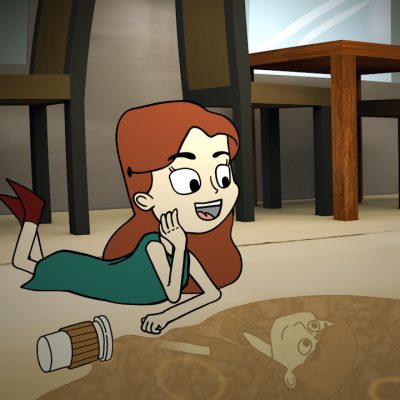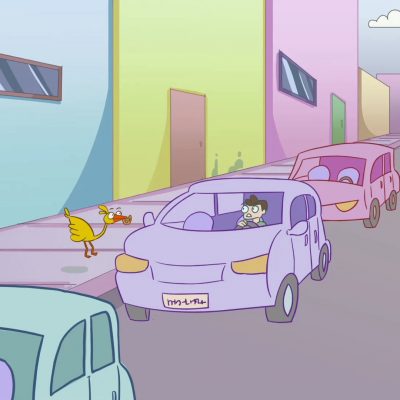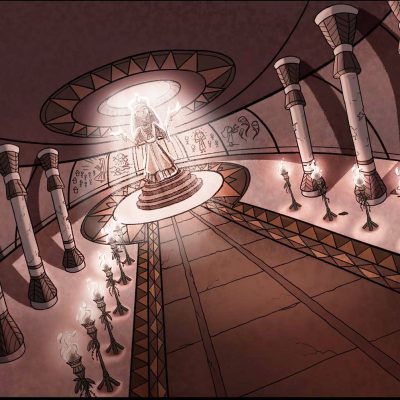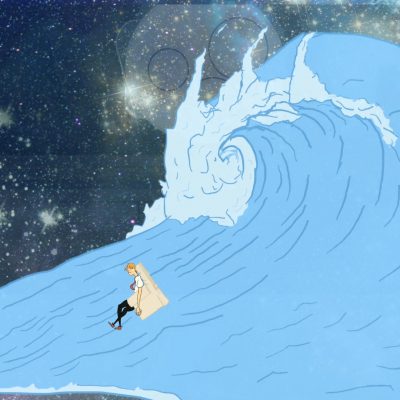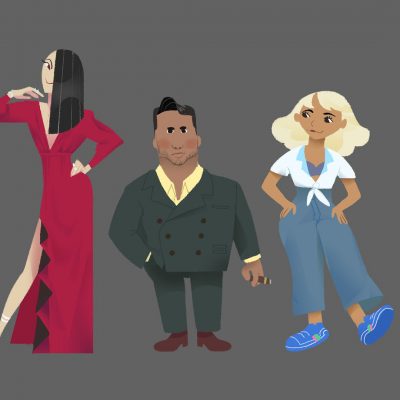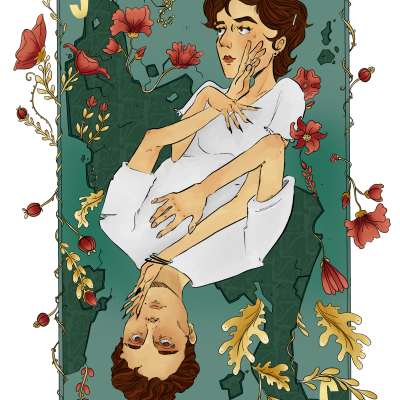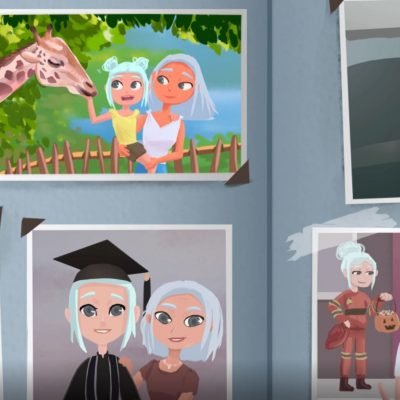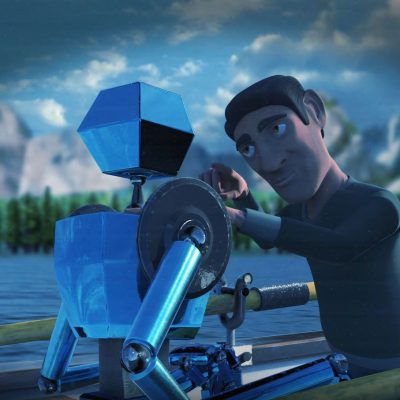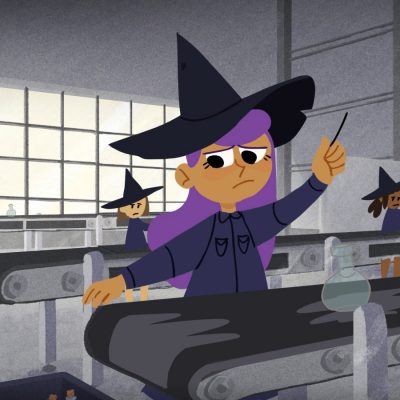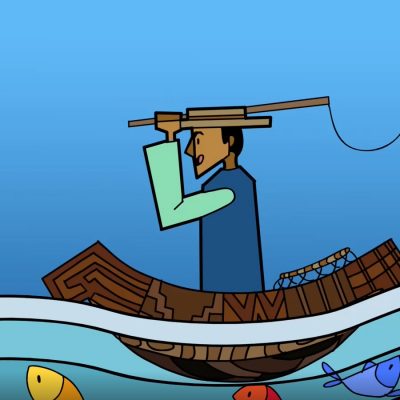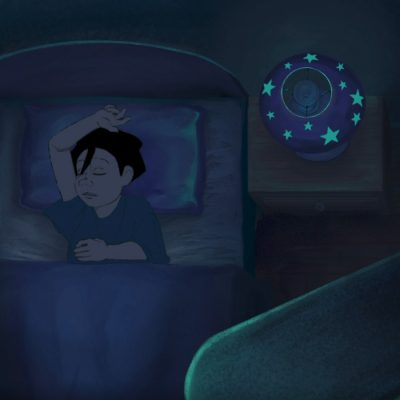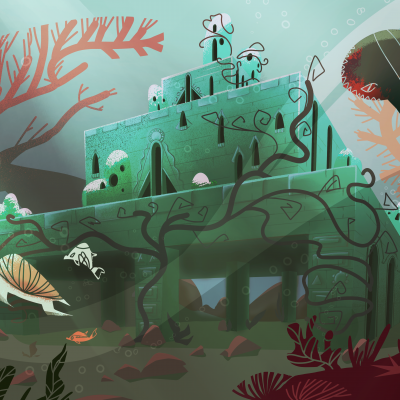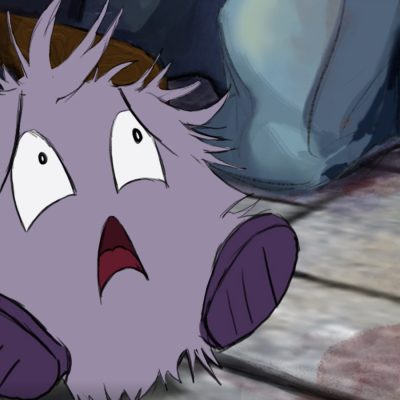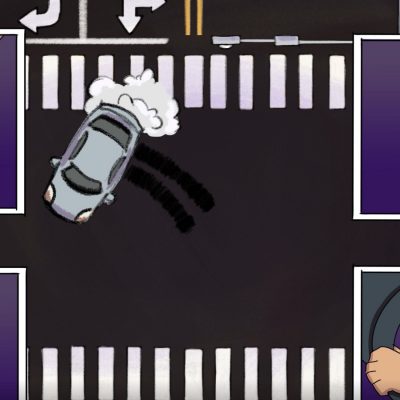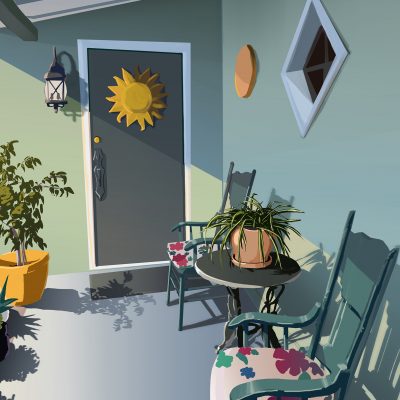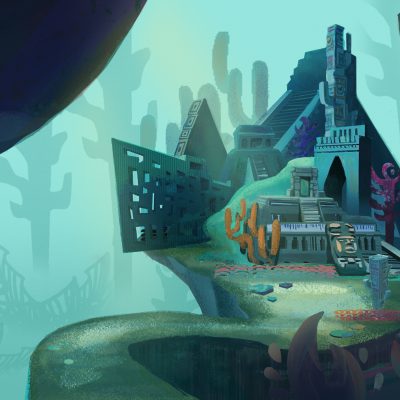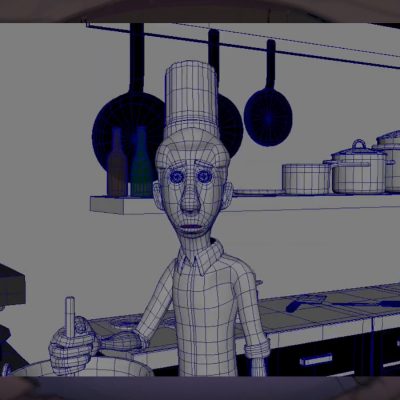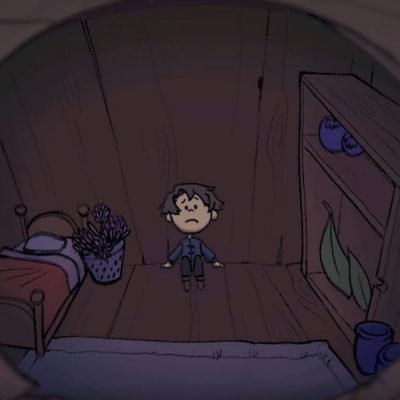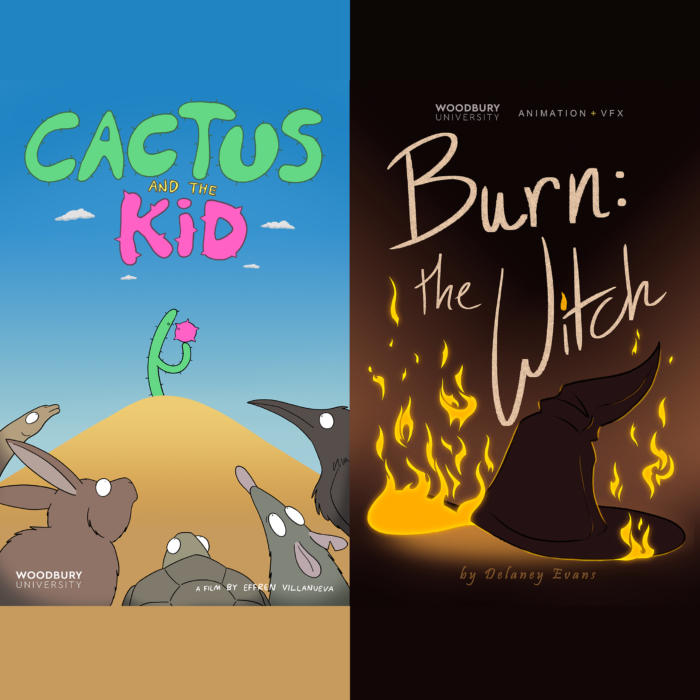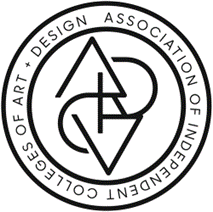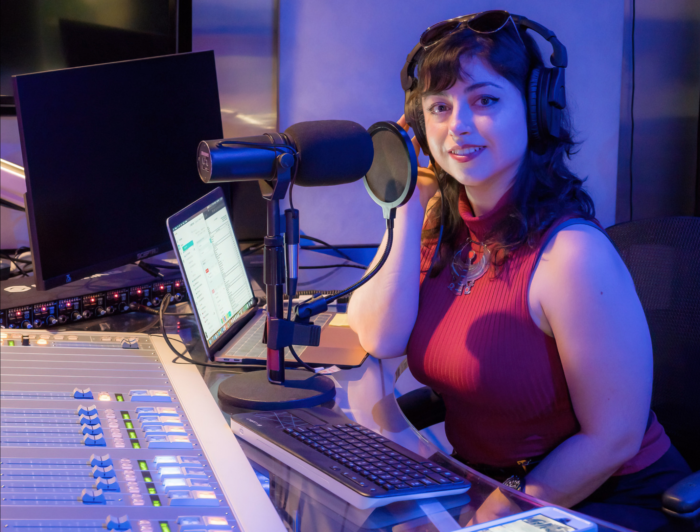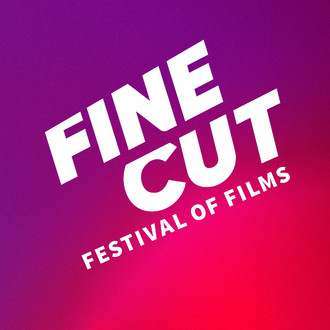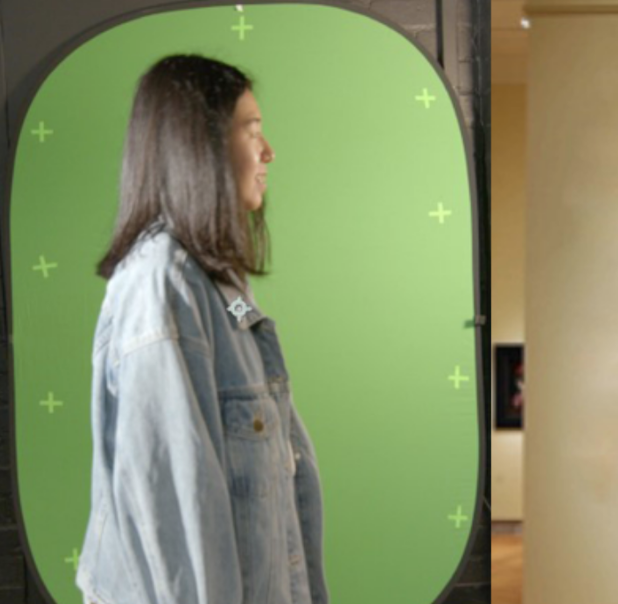School of Media : Culture : Design
Animation + VFX
Bachelor of Fine Arts [STEM Program]
Animation and visual effects are the art of visual storytelling using time-based media and a combination of 2D, 3D, stop-motion and visual effects. Our students develop characters and worlds and produce their own films. The goal of Woodbury’s Animation + VFX program is to help students develop their creative voices and prepare them for a successful career in professional animation and visual effects production.
Our Animation + VFX degree is a STEM program. Learn more about STEM at Woodbury.
Apply Request Information Take a Tour2D Animation
Our 2D animation production courses emphasize the traditional Principles of Animation and production design, storyboarding, acting in animation, and both paperless and puppet pipelines. This image is from a senior thesis film that has been selected as a KCET Fine Cut Finalist and mentioned in Variety.

3D Animation
Our 3D animation production courses emphasize the art of combining sculpted models, surfacing for color and texture, lighting for storytelling, rigging for posing, animation as acting and rendering and compositing to create believable visual stories. This image is from a restaurant interior CG-animated piece and has been selected for inclusion in SIGGRAPH’s FSSW Exhibit.
Stop-Motion
Our stop-motion production courses emphasize set-building, puppet making with armatures, and animating with a variety of stop motion approaches, including cut-out and rapid prototyping of facial expressions with 3D printing. This image is from a senior thesis stop-motion film project.
Visual Effects
Visual effects are used extensively in almost any type of film and TV program in a wide variety of genres. Our visual effects production courses provide a comprehensive approach to conceiving and designing spectacular visuals in support of storytelling.
Why Woodbury Animation + VFX?
Woodbury’s Animation + VFX program is ranked among the top animation schools in Animation Career Review’s list of Top 50 Animation Schools and Colleges in the U.S. Classes are taught in a studio environment where students learn 2D, 3D, stop-motion and visual effects techniques.
Woodbury is located within 20 minutes of more than 15 animation and visual effects studios where students often do internships – a requirement for each of Woodbury’s academic programs.
Animation + VFX faculty are industry professionals who work in the local animation and visual effects industries. Students have the opportunity to work one-on-one with instructors in small studio classes.
There are career opportunities in feature film, TV, commercials, ride films, games, websites, wearable tech, medical and architectural visualization – and – with streaming platforms such as Netflix, Hulu, Apple TV+ and Amazon Prime constantly looking for new content, there are more opportunities than ever!
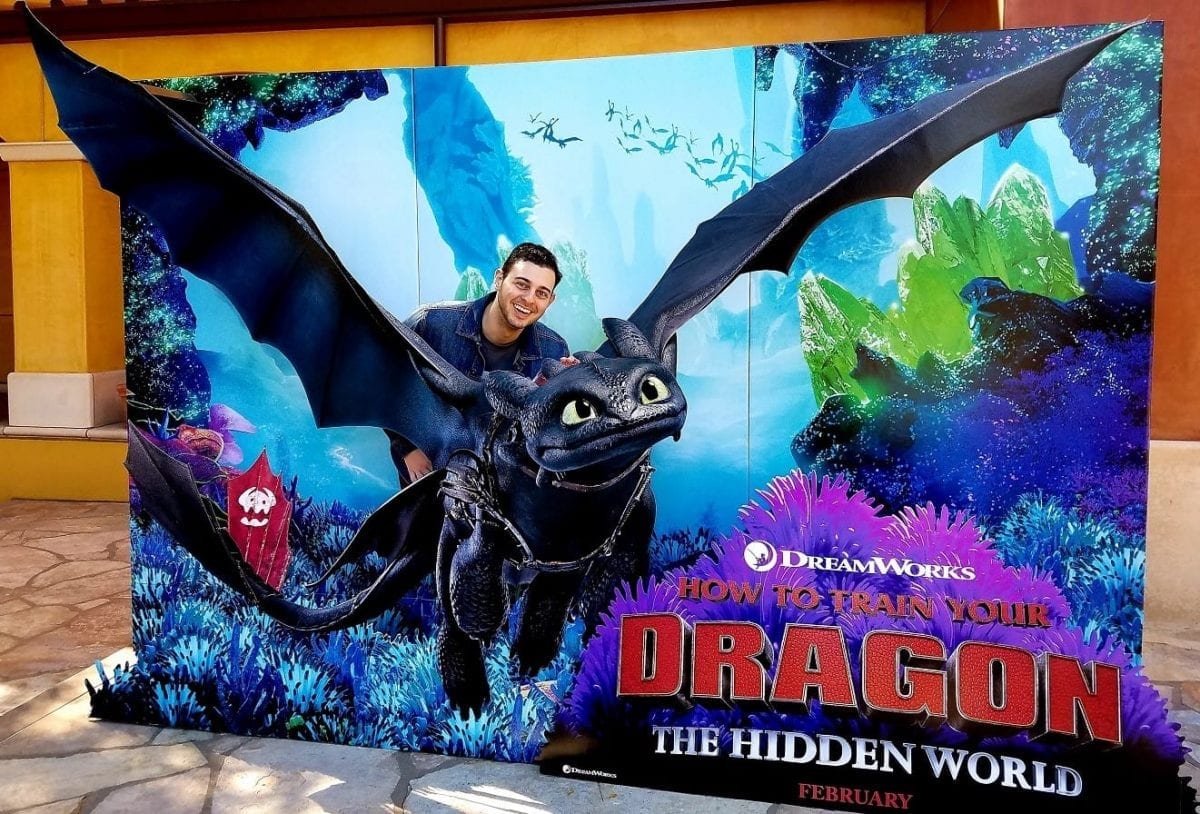
Internships & Careers
Internship Opportunities
- Cartoon Network
- Nickelodeon
- DreamWorks*
- Warner Bros.
- Chiodo Bros.
- Bix Pix Entertainment
- Acme Filmworks
- Walt Disney Imagineering
- Walt Disney Animation
- Titmouse Studios
- Hasbro Studios
- Stoopid Buddy Stoodios
- Netflix Animation
- Skydance Animation
Career Opportunities
- Director
- Producer
- Writer
- Storyboard Artist
- Visual Development Artist
- Character Designer
- 2D Animator
- Stop-Motion Animator
- Puppet-Builder
- Set-Builder
- Modeler
- Character TD
- 3D Animator
- Lighting Artist
- Surfacing Artist
- Rendering Artist
- Visual Effects Artist
- Visual Effects Supervisor
- Visual Effects Producer
Internships are a required component of the Animation BFA.
*Pictured above: Zare Oganesyan, Woodbury Alumnus working at DreamWorks
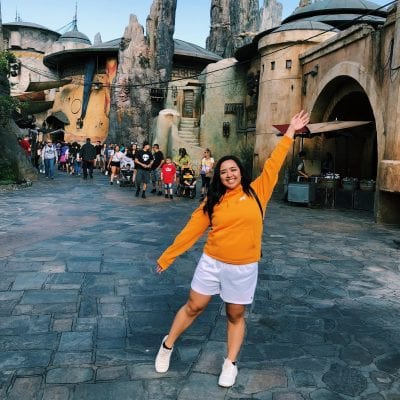
Alumni Spotlight
Alumna
Hannah Garcia
Since graduation, Hannah Garcia (BFA Animation 2019) has been working as a production assistant at Cartoon Network. Her senior thesis film, Taylor the Latte Boy: The Animated Musical Spectacular, made in collaboration with Andrew Arcilla, has been selected for the following film festivals: Shenandoah Seasonal Film Series, Queen Palm International Film Festival: Honorable Mention, Hollywood International Moving Pictures Film Festival: Semi-Finalist, 2020 KCET Fine Cut: Semi-Finalist and Top Shorts: Best Animation Award.

Alumni Spotlight
Alumnus
Prabhu Rajaganapathy
Prabhu Rajaganapathy is a 2019 Woodbury Animation graduate who came to Woodbury University from a small town in southern India in pursuit of his creative goals. Right upon completing his first year, Prabhu did an internship at El Grupo Animation, which made him significantly more prepared for the rest of his Woodbury classes. His senior thesis project, “Space Epic,” a short, 2D sci-fi animation film, went on to win Woodbury’s MVP award for outstanding performance, and to date, it has been selected into 15 different film festivals, including the KCET 2019 Fine Cut Competition. He intends to pitch “Space Epic” to a studio or network someday.
After graduating in 2019, Prabhu began working as a production assistant at Gaumont Animation and parlayed that experience into a job as a production assistant at Netflix Animation, where he recently started working on an animated series called “Ghee Happy,” created by Pixar alum, Sanjay Patel. Read the full article here.
Facilities
Animation + VFX studio courses are held in computer labs with industry-standard software and hardware; labs include Macs, PCs and Cintiq drawing tablets. The department’s stop-motion stages are equipped with professional DSLR cameras and 3D printing capabilities. Our end of year Animation + VFX Showcase is projected in our campus theater, equipped with surround-sound and 4K projection.
Animation + VFX Courses
The Animation + VFX program is a Bachelor of Fine Arts (BFA) degree designed to prepare graduates for a career in the animation and visual effects industry. Students learn visual and cinematic language through the production of personal projects.
FOUN 101 Beginning Drawing
3 UNITS
This is a fundamental course in freehand observational drawing. Various media and methods are introduced to develop perceptual and technical drawing skills. Through in-class projects and outside sketchbook practice, students study line, shape, form, proportion, perspective, and tone with an emphasis on spatial relationships and the effects of light on form. Drawing and composition are also studied as an opportunity to express conceptual content in individual design processes.
Studio. Prerequisite: none.
FOUN 102 Design and Composition
3 UNITS
This course introduces students to the elements and principles of design and to the processes of design thinking. Formal visual properties of line, shape, form, pattern, value, texture, and sequence are studied in their relationship to content and compositional organizing systems. Studio exercises using various media explore concepts of balance, harmony, repetition, rhythm, scale, and time in two, three, and four-dimensional organizations. Emphasis is placed on developing creative design concepts, gaining practical problem-solving skills, and communicating project solutions visually and verbally. Examples of historical and professional art and design are presented so that students may recognize their influence on contemporary design and to relate their own design efforts to a larger cultural context.
Studio. Prerequisite: None.
FOUN 105 Introduction to Figure Drawing
3 UNITS
Building on the observational drawing skills and methods gained in FOUN 101 Beginning Drawing, students in this course gain a practical understanding of the rhythms, proportions, movement, character, and anatomical structure of the human form. Through in-class study and outside sketchbook practice, additional emphasis is placed on developing the ability to visualize and adapt the human form for use in their design and related disciplines.
Studio. Prerequisite: FOUN 101 Beginning Drawing
FOUN 1711 Gesture Drawing
3 UNITS
Building on the foundational skills gained in FOUN 105 Introduction to Figure Drawing, this course will focus on a more gestural and individual approach to drawing the figure. Emphasis will be placed on rhythm and line of action, design, character, and narrative. Through in-class study from both figure and costumed models as well as outside sketchbook assignments, students will develop their ability to interpret the human form with more intent and authority. Studio. Prerequisite: FOUN 105 Introduction to Figure Drawing
ANIM 100 Animation Principles 1
3 UNITS
This is an introductory studio course in the basic techniques of animation. Through understanding and application of the 12 Principles of Animation as developed by the early Disney artists, students will learn the fundamentals that are common to 2D, 3D and stop-motion animation. Students will develop both drawing and observational skills through the creation of simple animations with an emphasis on character and personality. Students will create a variety of animated scenes in which figures move and act convincingly.
Studio. Prerequisite: None.
ANIM 101 Animation Principles 2
3 UNITS
Students continue their studies in biped personality character animation by analyzing and creating more detailed and more intricate animation using motion and locomotion. The projects in this class are designed to help students understand principles such as locating a character’s center of gravity, creating strong silhouettes, appeal in asymmetry and staging. This course will also introduce students to the differences between a paperless 2D animation pipeline and cut-out/puppet animation production techniques.
Studio. Prerequisite: ANIM 100 Animation Principles 1
ANIM 211 Storyboarding 1
3 UNITS
This is a studio course in storyboarding for animation. Emphasis is on visual storytelling, story structure, character development, cinematic language, and drawing techniques used in storyboarding. Students will also assemble their Progress Portfolio as part of the course requirements.
Studio. Prerequisite: None
ANIM 300 Acting in Animation
3 UNITS
In this course students expand their knowledge of the animation principles by developing an understanding of shot workflow, body mechanics, action analysis, dialogue and performance. They will create a foundation of research before beginning the assignments, including shooting video reference and creating thumbnail sketches. Emphasis is placed on blocking and posing before polishing their shots.
Studio. Prerequisite: ANIM 101 Animation Principles 2
ANIM 350 Junior Thesis
3 UNITS
This course is a detailed, hands-on overview of the production processes used in creating a finished 20 to 30-second long junior thesis film. Using the animatic created in ANIM 211 Storyboarding 1, students will create an animated film from initial character designs/models to final composited movie. Areas covered by this class include a review of the 2D/3D/stop-motion production pipelines and soundtrack synchronization.
Studio. Prerequisite: ANIM 211 Storyboarding 1
ANIM 380 Animation Thesis 1
3 UNITS
This course begins a 3-semester sequence focusing on creating the senior capstone film. 2D, 3D, stop-motion and mixed-media animated projects will be explored and students will develop a direction for their senior thesis project through the pitch process, visual research and development, and inspirational techniques.
Studio. Prerequisite: ANIM 350 Junior Thesis
ANIM 485 Animation Thesis 2
3 UNITS
This course is the second semester in a three-semester capstone course in digital thesis production. Using reference material developed in ANIM 380, students will use cinematic language, written and visual storytelling skills in the development of their animated film project. Each student will produce loglines, storyboards, an animatic, first pass of specified shots and a temp soundtrack of their 1-2 minute in length senior capstone film project.
Studio. Prerequisite: ANIM 380 Animation Thesis 1
ANIM 486 Animation Thesis 3
3 UNITS
This course is the final semester in a three-semester capstone course in digital thesis production. Students build on their animated film production experience in an advanced studio covering all aspects of animation production. The focus of the course is on the production of the senior thesis project and preparation for national or international animation festivals.
Studio. Prerequisite: ANIM 485 Animation Thesis 2
ANIM 103 Industry Insiders
1 UNIT
This lecture course will provide students with a strong overall understanding of the animation and visual effects industry. Throughout the semester students will learn about industry misperceptions and be given a “behind the scenes look” into how animation and visual effects are created from both a business and creative standpoint. Additionally, through class discussions and coursework the topics covered will go over career paths in the industry, the ‘ins and outs’ of the animation and visual effects pipeline, talk with industry professionals, and learn techniques for applying to internships. By the end of the course, students will have acquired industry knowledge that will help them to make more focused and deliberate choices when navigating their future scholastic and professional careers.
Lecture. Prerequisite: None
ANIM 210 Art Symposia
1 UNIT
In this lecture course students will attend both on campus and off campus lectures, exhibitions or events exploring a variety of topics in art, design and culture.
Lecture. Prerequisite: ANIM 246 History of Animation and VFX
ANIM 246 History of Animation and VFX
3 UNITS
This lecture course focuses on the historical, theoretical, aesthetic and technical developments that have shaped the medium since its beginnings. Lectures include screenings of animated and visual effects works, and a general overview of animation and visual effects processes. Areas covered by this class include the history of animation and visual effects in N. America, Europe and Asia.
Lecture. Prerequisite: None
ANIM 495 Portfolio Production
3 UNITS
This course is an instruction in the preparation and presentation of the animation resume, portfolio and reel. Lecture topics include professional practices, studio structure, career strategies and business practices in the animation and visual effects industries.
Lecture.
ANIM 310 Production Design
3 UNITS
This course focuses on the examination and exploration of visual development concept art, which includes environmental design, character design, prop design and color script presented in a portfolio form. The figure, both nude and clothed, will be explored as a reference for creating animation characters, sequential studies and caricature. Examination and exploration of composition, lighting, color, style, and various painting techniques as components of animation development and visual storytelling. Emphasis is placed on techniques used by professional development artists in the animation industry.
Studio. Prerequisite: None
ANIM 320 Figure and Animal Drawing
3 UNITS
This is an intermediate studio course in figure drawing, and onsite drawing of a wide variety of wild animals at the Los Angeles Zoo, LA Equestrian Center, Griffith Park Dog Park, and Gene Autry Museum. Emphasis is on continuing refinement of anatomical knowledge combined with use of line, modeling in light, and composition to develop an expressive and personal style. This course is designed to support students in the development of a professional portfolio that meets industry standards.
Studio. Prerequisite: FOUN 105 Intro Figure Drawing
ANIM 430 Figure Drawing Workshop
3 UNITS
This course is an advanced figure drawing course with a focus on linear technique. Emphasis is on continuing refinement of anatomical knowledge combined with use of line, modeling in light and composition to develop an expressive and personal style. This course is designed to support students in the development of a professional portfolio that meets industry standards.
Studio. Prerequisite: FOUN 105 Intro Figure Drawing
ANIM 161 Intro to Digital Media
3 UNITS
This course is an introductory studio in fundamental computer applications and processes used in animation production. The emphasis is on software programs specializing in imaging, drawing and painting, editing, compositing, motion graphics, raster and vector artwork.
Studio. Prerequisite: None
ANIM 262 3D Animation 1
3 UNITS
This course provides a basic overview of the 3D animation production pipeline using hi-end 3D animation software. Topics covered include modeling, surfacing, lighting, character rigging, animation, rendering and the creation of a short 3D animated film. Fundamental concepts of 3D digital animation are emphasized.
Studio. Prerequisite: ANIM 161 Introduction to Digital Media
ANIM 264 3D Animation 2
3 UNITS
This course begins a detailed overview of the production processes used in creating 3D character animation. Students will create an animated project from initial design and organic modeling to final character animation. Areas covered by this class include character modeling, character rigging using industry-standard tools and methods, character animation techniques, facial animation and soundtrack synchronization.
Studio. Prerequisite: ANIM 262 3D Animation 1
ANIM 263 Stop Motion Animation
3 UNITS
This studio course is an introduction to the fundamentals of stop-motion and character-based puppet animation. Students will experiment animating with materials and objects through frame-by-frame camera recording in set-based three-dimensional space.
Studio. Prerequisite: None
ANIM 1704 Intro to Visual Effects for Filmmakers
3 UNITS
In contemporary filmmaking and television production, visual effects are used extensively in a wide variety of genres and formats to contribute to visual storytelling and help deal with production limitations. This studio course provides an introduction to the world of visual effects and animation, focusing on their current status and effect on film, television, and digital media. Students will create projects which combine the elements of story with computer-generated visual effects.
Studio. Prerequisite: None
ANIM 200 Perspective for Animation
3 UNITS
Perspective theories were established during the Renaissance and are the crucial foundation of 3D drawing and painting, with direct applications in architecture, animation, illustration and industrial and environmental design. This class provides an introduction to and exploration of 3D perception and linear perspective systems that enable fine artists and animators to simulate 3D space on a 2D plane.
Studio. Prerequisite: ANIM 101, Animation Principles 2
ANIM 2709 History of Disney Animation
3 UNITS
Students will learn about Disney 2D animated features from the studio’s beginnings through the 1960s. Readings, lectures, and screenings will prepare students for discussion of the films. Students will analyze developments in narrative, adaptation, character design, animated movement, backgrounds and other aesthetic elements. We will also learn about the role of individual artists at the Disney studio and examine the context of the times these films were created.
Lecture. Prerequisite: None
ANIM 301 Digital Sculpting
3 UNITS
Traditional and digital sculpting in three-dimensions are highly creative art forms and essential to understand as working artists in the animation and visual effects industries. Building on organic modeling skills learned in ANIM 264, students will explore the fundamentals of creating digital sculpts, both organic and hard surface. Important concepts in sculpting and painting in the creation of highly-detailed characters, props and environments will be covered.
Studio. Prerequisite: ANIM 264, 3D Animation 2.
ANIM 302 History of Women in Animation
3 UNITS
From the beginning, women and underrepresented groups have held a strong presence within animation, yet when examining history, minimal emphasis is placed on their contributions. The truth is, throughout most of the 20th century, leading women – and other under-recognized artists – established, defined and expanded the animated art form, yet very little is recorded of their work, and their films are rarely examined. This first-of-its-kind course delves into these artists and their artistic contributions within the animated art form. Through lecture, screenings, presentations and guest speakers, students will achieve a comprehensive understanding of this previously invisible half of our collective animated past.
Lecture. Prerequisite: WRIT 112, Academic Writing 2 or WRIT 113, First-Year Academic Writing; LSCI 105, Information Theory and Practice or LSCI 106, Information Sources in Architecture and Interior Architecture or LSCI 205, Information in the Disciplines.
ANIM 311 Storyboarding 2
3 UNITS
This is an advanced storyboarding course that will emphasize perspective, deep space in compositions, drawing volumetric characters and keeping characters on model. There will also be a continued emphasis on visual storytelling, story structure, character development, cinematic language, and drawing techniques used in storyboarding.
Studio. Prerequisite: ANIM 211 Storyboarding 1
ANIM 345 Visual Effects 1
3 UNITS
This course introduces students to the fundamental skills used in the visual effects industry. Students learn basic compositing techniques and how the VFX field integrates computer graphics and 3D elements with live action plates. Students will create practical exercises which simulate current industry pipelines.
Studio. Prerequisite: ANIM 264 3D Animation 2 or approval of Chair
ANIM 366 Puppet Building
3 UNITS
This studio course is an advanced exploration into specific techniques utilized in making stop-motion and/or experimental animation. A variety of design and visual development strategies are employed to provide a platform for students to create 3D sculptural stop-motion maquettes, puppets, sets and props for a senior thesis film or for individual exploration.
Studio. Prerequisite: ANIM 263 Stop-Motion Animation
ANIM 367 3D Animation 3
3 UNITS
This course builds the foundation for using light to create the illusion of shape and depth in 3D animation. Students analyze techniques used by Renaissance artists and understand how those same techniques are used today in the entertainment industry. Interior and exterior illumination scenarios will be explored and advanced indirect illumination, shading, lighting, rendering, and multi-pass compositing techniques will be covered.
Studio. Prerequisite: ANIM 264 3D Animation 2
ANIM 3716 Digital Painting
3 UNITS
This is an advanced studio course in background painting techniques with emphasis placed on staging and supporting the theme and narrative of the animated story through color, light, composition, perspective, tone and mood.
Studio. Prerequisite: ANIM 310 Production Design or approval of Chair
ANIM 3718 Visual Effects 2
3 UNITS
Students will learn advanced digital compositing techniques using nodal compositing software applications. Areas covered include color correction, keying, rotoscoping, tracking, digital paint and camera projection. By completing a series of exercises and projects based on professional visual effects methodology, students will develop the aesthetic and technical skills necessary for integrating a combination of visual elements into believable imagery.
Studio. Prerequisite: ANIM 345 Visual Effects 1
Progress Portfolio
All students will be required to develop a portfolio/reel including specified work from each completed lower-division studio, including FOUN 105, ANIM 100, ANIM 101, ANIM 161, ANIM 211, ANIM 262, ANIM 263 and ANIM 264. The Progress Portfolio will be an assignment submitted at the end of the Sophomore year. Students will be assessed for their progress in the program and readiness for upper-division studios.
Career Experience
The purpose of the Career Experience is to broaden students’ experience to include greater responsibility, understanding, and involvement in the work environment. Students are required to complete 120 hours. Career Experiences in our department may be in 2D animation production, 3D animation production, stop-motion production, game art production, visual effects, post-production, motion graphics, commercial, television, or feature film production.
Requirements
In addition to the portfolio and written statement required of all applicants, incoming freshman and transfers applying to the Animation + VFX program are required to submit an additional portfolio of at least four (4) examples of art (you may submit more than 4) showing: observational artwork and life drawing. Learn more on our Portfolio Requirements page:
Portfolio mentorship
Are you looking to develop your design and drawing skills and create work for your college entrance portfolio? Get friendly advice on improving your portfolio from an art professional at Woodbury University. Click here to learn more about the initiative or follow the link below to register for a session.
Students are required to have a Windows laptop by their sophomore year. These computers are ideal for the hi-end 2D, 3D, stop-motion, and compositing software applications we use in our department. Required software includes Microsoft Office & Adobe Creative Suite.
The ideal configurations are:
- 15″ or 17″ Windows laptop
- Processor: 11th or 12th Generation Intel Core i7 or i9
- Memory: 16GB or 32GB RAM
- Storage: 512GB or more of high-performance SSD (Solid State Drive)
- Graphics: Nvidia GeForce RTX 3070 or higher, or Nvidia Quadro RTX A3000 or higher
- Pen Tablet: Huion (store.huion.com) or Xencelabs (xencelabs.com/us) sell a wide variety of pen tablets and displays and are a lower-cost alternative to Wacom products and are recommended by our IT department.
- External Hard Drive: Required to store your projects and move them between your computer and WU workstations. We recommend an SSD (Solid State Drive) with a minimum storage capacity of 1TB, USB 3.1 (or higher) connection. For HDD type drives, we recommend a speed of 7200rpm, minimum storage capacity of 500GB and USB 3.0 (or higher) connection. Though an SSD drive is more expensive, it will transfer your files 5-10 times faster than a traditional HDD and significantly reduce wait times.
Faculty Directory
Woodbury’s faculty are accomplished, caring academics and professionals dedicated to supporting the success of students throughout their academic journey. They bring their professional expertise to students and work closely with them to teach the skills and theory required to enter professional practice or pursue advanced study. Through this individual attention, Woodbury fosters close mentoring relationships between faculty and students in a supportive and encouraging environment.
University accredited by:
NASAD: National Association of Schools of Arts & Design
WSCUC: Senior College and University Commission (formerly WASC)
